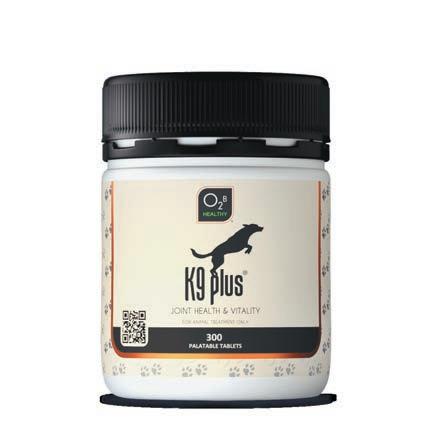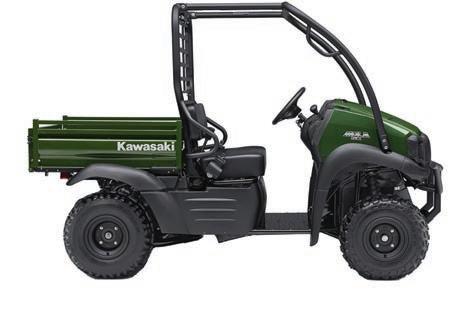
































Recently Awatere Dog Trial Club, near Seddon, Marlborough, hosted the annual Farmlands Centre Championships at the Westenra’s family farm in the Awatere Valley.
Advertising Sales
Danielle Brown danielle@topsouthmedia.co.nz
Summa Donald summa@nmf.co.nz
Steve Page steve@nmf.co.nz
Accounts Queries accounts@topsouthmedia.co.nz
The Farmlands Centre Championship event rotates between clubs and creates a step up in the competition as it culminates in a high-pressure runoff between the top five dog and owner teams to achieve the highest aggregate score.
“To qualify for National’s at the other events requires multiple good performances, as you have to accrue enough points,” Awatere Dog Trial Club president Sam Lunn explains. “There were local contestants, some from Canterbury and some from as far as the central North Island that came to compete in the hopes of booking their spot at National’s”.
“It was a great couple of days with the sheep working very well making for a very high standard of runs, with 15 out of the 20 finalists being local Marlborough/Nelson competitors we were very happy,” Sam explains.

“The Awatere Club has really stepped it up this year. The courses and the sheep were well presented which is great because it gives us our best shot at competing fairly,” Treasurer of Flaxboure Dog Trials, located on Marlborough’s east coast Tahi Doonan says smiling, “The Centre Championships are a great taste of what’s involved, and the type of pressure you get in the bigger more prestigious competitions.”
“A special thanks to our club members who contributed a huge amount of time over the period leading up to the
event as well as Kate Shadbolt, Pip Lunn, and the team in the Kitchen for feeding more than a hundred people over the two days and our major local sponsors HBC Contracting, Ngaio Downs Contracting, Brackenfeild Angus, Marlborough Helicopters, Gills Construction, Rural Livestock and all our other silver sponsors which are too numerous to mention; I can’t stress how important it is to a small community event like this,” Sam says seriously. Sam also says the Westenra family, where the event was hosted, and other landowners

who supported the event had made a huge contribution by offering the use of their land and livestock for the event.
“It’s a huge commitment for these families and is much appreciated, especially during a season of such trying conditions like we are having this year,” Sam explains “It was a great couple of days, and the success of the event and the support we have received has really given the Awatere club a real buzz.”



Some sheep farmers in Marlborough are questioning the performance of two of the industries national bodiesThe Meat Board and Beef + Lamb.
According to Avon Valley sheep farmer, Ralph Mason, sheep farming is in a crisis that must be addressed, he told the March meeting of Marlborough Federated Farmers.
He questioned whether the Meat Board was ‘still needed’ in this day and age. If so, why are they needed, he questioned. And Glenda Robb questioned the value of Beef + Lamb taking over advocacy of the industry.
“The NZ Meat Board was formed in 1922 to regulate the export on sheep meat and beef including market-
ing pricing and freight and also to help achieve optimal returns on meat exports,”
Mason said.
“With sheep meat prices to farmers having fallen to an all-time low the Meat Board has failed farmers.”
The Meat Board has $77.8 dollars in reserves to use in any crisis that might happen in the sheep and beef industry.
“In my opinion there is a crisis in the sheep industry now and the $77.8 million should be paid to farmers.”
Mason urged Marlborough Federated Farmers to call on the Minister of Agriculture Todd McClay to investigate the activities of the Meat Board.
“In this day and age are they still needed? Why are they needed? There is a current crisis so pay the money to
farmers.”
Richard Dawkins said he would discuss the matter with Federated Farmers NZ’s meat and wool section chairman and report to the next meeting.
“Returns have dropped 25 percent in the last few years. How effective is that?” he added.
Chris Dawkins said the reserve money was intended in case of a calamity like an outbreak of foot and mouth, but times have moved on since then.
Beef+Lamb came under scrutiny too with Glenda Robb expressing concern about Beef+Lamb taking over advocacy.
It was decided to take the matter up with the national office of Federated Farmers. Richard Dawkins said the matter should be aired
at the forthcoming AGM of Beef+Lamb and farmers should be encouraged to attend and vote.
Marlborough Federated Farmers meat and wool chair Cath Baker, reporting on attending Federated Farmers national council, said the national office lobbies diligently and recently had some success for greater farmer input into the upcoming Animal Welfare Code reviews.
“Feds are working hard and the positivity and drive of the people in Feds head office is admirable. I came away thinking that our ground-up issues are understood. They know our priorities and understand the pressures we face daily. It is heartening to hear ministers’ doors are open to our people, and that they are listening. We are in good hands,” she said.
For nearly 90 years, the Lowe family has been harvesting apples on the orchard near Brightwater and this week Andrew Lowe begins harvesting the export varieties that will end up around the globe.
He is the third-generation in his family to grow fruit on the orchard which still has some of the original Sturmer apple trees that were planted and harvested by his grandparents. They took over an existing orchard in 1935 and today it produces fruit for local market from about 7ha, with another 5.5ha growing apples for export.
It is a small orchard by today’s standards and Andrew says that is why they have a big focus on local market and grow a variety of fruit that includes strawberries, stonefruit, plums and now has young cherry trees that will add to the mix.
Heading into the export apple harvest this year, he says the crop is looking “pretty good”, though the fruit size on the orchard is slightly smaller due to thinning challenges.
“Fruit set was exceptional, but chemical thinning wasn’t as good as we would have liked, so we had a big-
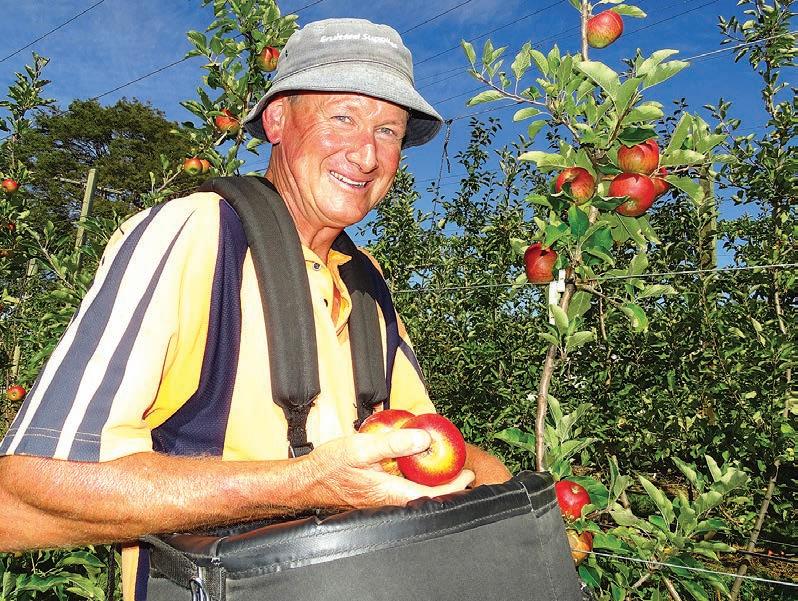
ger hand-thinning job. It was a bit of a battle to get the job done. So, the downside is the fruit size is a bit smaller.
“Quality and volume is looking good, but how it all pans out is an unknown. We don’t really know until November-December when you get your final payment. But you have to be optimistic.”
On a smaller orchard, Andrew says it is difficult to get RSE (Recognised Seasonal Employer) workers and they
rely on backpackers to help get the fruit off the trees at harvest. Though there were plenty of backpackers around earlier in summer, he says there seems to be less looking for work now, perhaps because they have moved on to other regions for work. He has enough seasonal staff organised for the harvest, but says it is never a guarantee.
“It’s a lottery every year when it comes to staffing. But at this stage, it seems
Waimea Dog Trial Club is getting geared up to host its annual trial on Friday 19th and Sat 20th of April. Friday is a half day only, from midday, with heading dogs competing in the long head and the short head and yard. On Saturday, both heading events will run alongside the straight and zig zag events for Huntaways. Friday 19th, from midday and Saturday 20th 9am-2pm at 320 Higgins Road, Wakefield, Tasman.

okay.”
Harvest will be done and dusted on the orchard by early April, whereas he says larger orchards with more apple varieties will be harvesting through to May. Though the orchard has a limited range for export, it grows a diverse mix for local market such as a few trees of Cox’s Orange which was once widely grown on orchards throughout Tasman but is now a rarity and a treat.



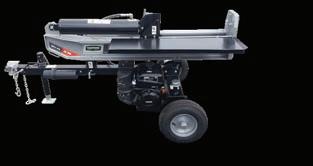











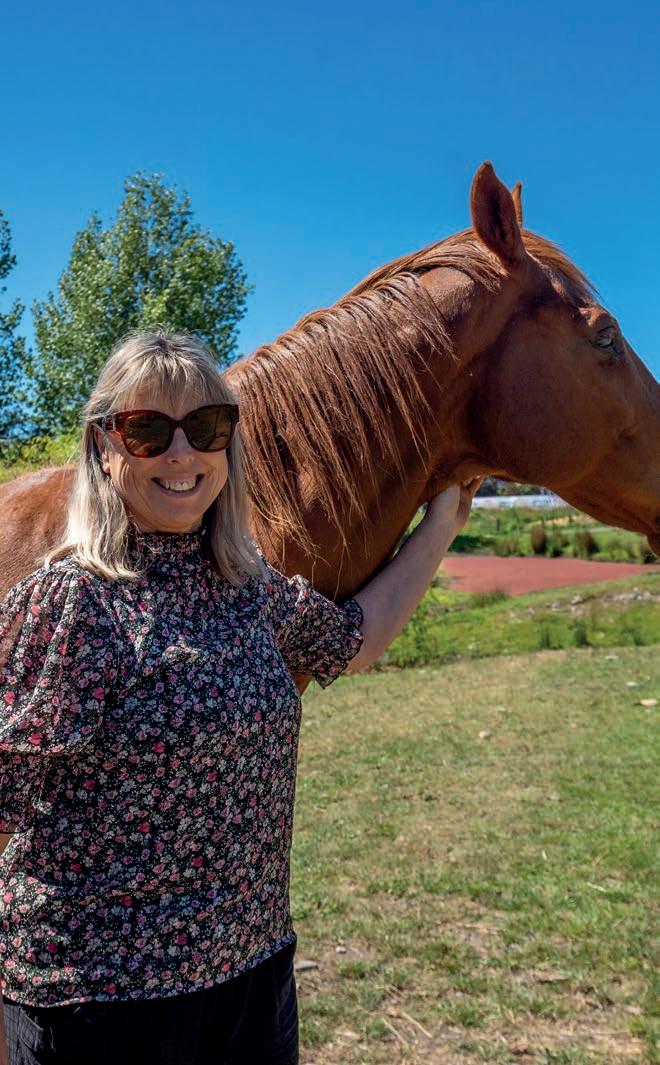

One of only two automatic vegetable planters in the country is now planting seedlings into the soil around the Waimea Plains for Conning’s Market Garden.
The Ferrari transplanter will replace up to four people on the old planter which was coming to the end of its life.
Director Ben Conning says the machine will lower costs and help the business remain competitive in an industry where many growers are struggling to make money.
“You need to be more cost efficient than your competitors, so if you can lower your costs, the more likely you are to survive. Especially at the moment when costs are your biggest enemy and wages are your biggest costs.”
He says the family business
which grows 160ha of vegetables around the plains made the decision to buy an automatic planter during the Covid-19 pandemic when it was “next to impossible” to find people to work on the old planter.
“It was a no-brainer to find a machine to replace three to four people.”
That led to the importation of the Ferrari transplanter from Italy and some of the Ferrari team have been in New Zealand to teach them how to use the machine. It is now up and running, though Ben says it will take time to fine-tune the process, particularly getting the seedlings grown correctly for the machine to plant.
One of the advantages of being market gardeners with a vegetable plant nursery is they can play around with the seedling process to get it right, he says.
Now, instead of maybe two to three people on the old machine to plant brassicas, or up to four to plant lettuces, the new machine needs
just a driver and one person following to check the planting and fill in any gaps.
“If you can save yourself two to three people a year, it pays itself off over a five-to-sevenyear period.
“For us, organising a crew for the old planter, including the driver, means you have up to six people showing up on time and keen to work. There’s a lot of energy tied up with organising staff. This machine can go faster as well.”
Ben says there are not many growers around the country making money right now due to increasing costs at a time sales have dropped. He attributes less sales to good weather across the country leading to an oversupply of vegetables, combined with the cost of living impacting on customers spending.

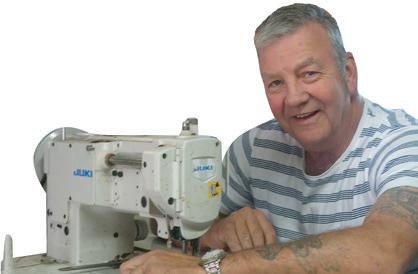
Part of the cost of the planter will be a low-bed trailer to haul it between different blocks of land. The family grow vegetables on 12 blocks of land around the plains that are either owned or leased and Ben says at a speed of about 12 kilometres per hour, it will be more time efficient to put it on a trailer than drive it on along the road.
Australian viticulturists are facing tough pricing and are protesting as a result. Those impacted supply bulk wine producers and have been hosting protests about the significantly lower prices they have been receiving for their grapes. Some are leaving grapes to fall to the ground and rot and others are spraying their vines to prevent them from germinating. Here in NZ grapefruit prices are on the edge with rumours and reports that prices are due to slump here.


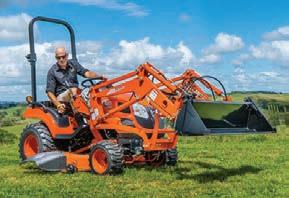

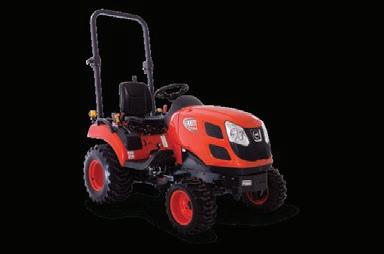


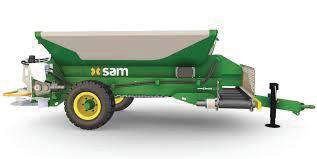

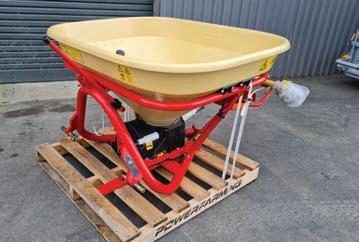







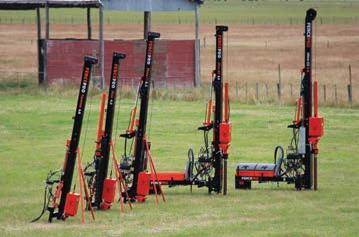
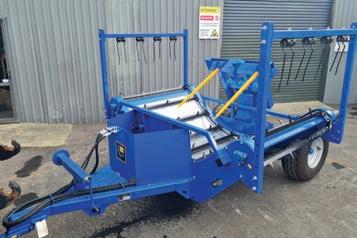

Our all-natural fine particle fertiliser delivers gentle yet powerful nutrients accurately and without waste. The secret? Unadulterated, high-quality ingredients blended into pellets. They’re easy to spread and with less waste you don’t need as much, so it’s better for your soil and our earth.


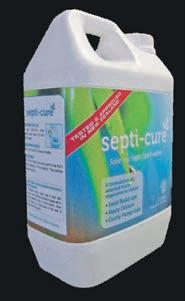

Consult has become part of a more significant word. The new government wants to reduce the number of consultants the previous government used. Did it appreciate that carrying out political policies and objectives also needs knowledge and skills and more than people and desks?
Consultants always sound expensive. They have to earn enough to pay for not only the store bill but also their sick leave, holidays, travel time, job perks, essential continuing education, and upskilling in their field. Public servants have all those with salaries and bonuses. The cost of their failure or delay is measured differently without their seldom-known input. We saw that from unskilled agricultural policymaking in the last few years. It comes down to getting the best people for the best job for the final product.
experience or memory of that. Closer to home is local body management requiring staff to set up consultations with ratepayers for proposed changes. They use public meetings, open days, publications and websites with information and other opportunities.
The inference is that everyone has the opportunity to contribute. Does this consultation work?
litical reports from experts doing their best to demonstrate their expertise. Staff respond to a submission, and the submitter can make another submission considered by Councillors giving their staff the final call. The submitter’s only remaining option is an appeal to the Environmental Court at an unaffordable cost.





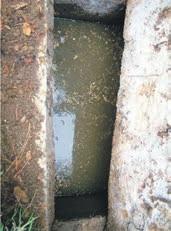

Consultation is another version of consult. A particular application is with central government seeking public input to local, regional and national proposals and later Select Committees. You will have your specific interest,
Generally, no. Why? Several reasons. Submissions need knowledge and understanding of the topic, jargon and acronyms, technical information and academic-speak. Then, more time to read and understand is necessary before preparing a submission. It was concerning but not understandable to hear a senior Minister of the previous government casually dismiss and ignore 1800 standard fill-in forms from a lobby group amongst 2200 submissions as being of little significance. Their opinion did matter, even if not in an acceptable form to her.
A particular example is the consultation on land zoning changes. A submission needs prior wading through wordy engineering, land use, demographic and po-
NZ King Salmon has, after a nine-year resource consent and consultation process, gained government approval to establish an open salmon farm in the Cook Strait. “From here, we will complete our 18-month programme of rigorous benthic (seabed), seabird, and marine mammal monitoring. This will provide a baseline of information, against which we can measure the impacts of a working salmon farm.” Says King Salmon CEO Carl Carrington. The farm will be located around 7km off Cape Lambert and will be the first of its type for King Salmon with the fish species being Chinook. It’s estimated to be under 12 hectares and made of 20 circular pens that once operational has the potential to produce around 10,000 tonnes of Chinook salmon which would generate $300 million in new revenue annually.

The consultation system fails at both ends. For various reasons, the needed inputs by people to be affected are missing, and those that are received deserve better treatment. Evaluating proposed consultation changes by B&LNZ for farmer input will be interesting. They were more face-to-face meetings to identify farmer-led solutions, farmer groups with specialist knowledge to help formulate policy positions, more surveys to test and help prioritise them and work with farmers to calculate their potential impact on business profitability. Such improvement is welcome; our local bodies could adopt this for rural issues as more consultation is needed. Consultation on improving consultation? Right now, it is more insult than consult, which is just a con.
Silver Fern Farm’s Dave Courtney described lamb sales from the recent Chinese New Year celebrations as subdued. China took 56% of NZ sheep meat exports last year, and exporters had hoped the Chinese New Year celebrations would boost lamb prices, which are currently about 25% lower than last season. Courtney said Chinese consumers remain cautious due to the effects of deflation, a weak property sector, and high local government debt, but the country remains an important market for exporters.
A warning for other farmers who could be in the same position. 85-year-old women ignored the obvious suffering of her livestock as a result the judge sent a warning to other farmers – either retire from farming or get help. The elderly lady had farmed all her life and was responsible for around 60 livestock on 100 ha. A neighbour alerted MPI of cows in a state of distress. MPI charged her with five counts of offenses under the Animal Welfare Act 1999. The charges involved the neglect of five animals, including steers suffering from woody tongue, one with a facial infection, and another with a club foot.













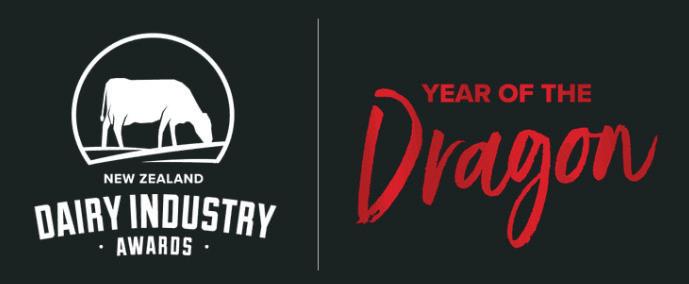
The major winners in the 2024 West Coast/Top of the South Dairy Industry Awards cite their financial discipline and low-input once-a-day system as their business’ greatest strengths. Michael and Cheryl Shearer were announced winners of the region’s Share Farmer of the Year Category at the annual awards dinner held in Shantytown on Saturday night. The other big winners were Trinity Jackson, who was named the 2024 West Coast/Top of the South Dairy Manager of the Year, and Alexandra Davidson, the 2024 West Coast/Top of the South Dairy Trainee of the Year.
The Shearers run a very tight ship that is sustainable and profitable in all pay-outs and say the once-a-day system allows for time out of the
shed and off the farm. “It’s important to be able to give your mind a rest from the farm as this helps to keep your head and thoughts clear and remind you what is really important.”
The Shearers are 50/50 share milkers on Russell Andrews’ 225ha Reefton farm milking 500 cows. They won $8,000 in prizes and four merit awards. Michael was named 2014 Taranaki Farm Manager of the Year and in 2012 he placed third in the New Zealand Dairy Trainee of the Year competition after winning the West Coast Top of the South regional title. He credits his previous Awards experiences with increasing his job opportunities and career progression as well as confidence and networking.
Michael and Cheryl have faced a few challenges over

the past few seasons, including the 2019 Tasman Forest fire which saw them evacuating their cows and farm for two weeks.
“We returned to a fairly de-
stroyed farm and a few years later lost 25% of our milking platform for 6 months in the 2022 Rai Valley floods.” The Shearers maintain a positive outlook and see challenges as an opportunity to work out positive solutions. I actually enjoy the hard times as they drive you to better your business and find different options and ways of doing things,” says Michael. The couple are excited about the number of future options available in terms of farm ownership and aim to purchase as 400-cow farm soon. “Long term we’d like to own a few farms that we can utilise to help young people into farm ownership.”



The New Zealand Dairy Industry Awards are supported by national sponsors CowManager, DeLaval, Ecolab, Federated Farmers, Fonterra, Honda, LIC, Meridian, Ravensdown, and Trelleborg, along with industry partners DairyNZ, MediaWorks and Rural Training Solutions NZ. The runners-up in the Share Farmer category are Warric and Rachel Johnson who are contract milkers for Phil & Jocelyn Riley on their 375ha, 1100-cow Tapaw-
era property. They won $3,500 and three merit awards.
Warric and Rachel began their farming journey 25 years ago and entered as they believed it would be a good opportunity to broaden their network, measuring themselves against others within the industry as well as a good learning experience. The couple are proud that they have decreased their staff hours to 1950 hours average, per annum, per employee which means all their staff are earning over the hourly living wage. “Farming is so much more than a job to us both, it’s a lifestyle that not only we love but are also lucky enough to share with our children, grandchildren, extended family and friends,” they say. “It’s not unusual for us both to go for an evening drive through the farm admiring the clover or grass cover and discussing what we can improve on or our future goals.”
“We feel farming isn’t just about “farming”, it’s about meeting new people and forming a wide network. It’s about ‘always learning’, because if you think you
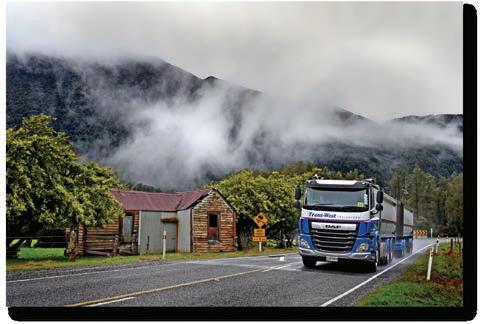
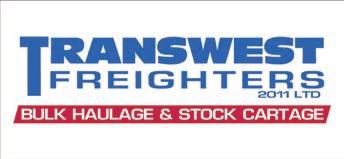

know everything there is to know, then it’s probably time to hang up your boots and overalls.”
Third placegetter in the Share Farmer category was awarded to Mark and Esther Tubman who are contract milkers for John and Anne Freeman, on their 150ha, 345-cow Takaka property. The second-time entrants placed third in the same category last year. They won $3,500 and one merit award.
Due to the minimum number of finalists not being reached, West Coast/Top of the South Dairy Manager entrant scores were benchmarked against the national average, with data collated from the 10 other regions. This also means merit awards are awarded if the entrant achieved at the right level.
The winner of the 2024 West Coast/Top of the South Dairy Manager of the Year category is Trinity Jackson, who describes herself as a converted townie. Trinity is farm manager for Pāmu Farms of New Zealand on the
441ha, 800-cow Moana property. She won $7,000 in prizes and three merit awards. The third-time entrant was named runner-up in the 2022 West Coast Top of the South Dairy Trainee category and says there are many benefits to entering the Awards. “The experience pushed me out of my comfort zone, and the feedback from the judges was incredible. It was an excellent way to challenge myself and meet new people.” Trinity found her passion for animals and farming through her partner Tristan who introduced her to the lifestyle.
“I have an immense passion for animal welfare as well as a drive to challenge myself to produce a quality food product while protecting our environment.” The 22-year-old is proud of the improvement and development made on-farm and seeing the results of hard work, especially regarding somatic cell count, production, presentation and personal development. Trinity would like to be involved in innovation

and ideas within the industry and help the next generation learn and grow in the farming industry. Future farming goals include contract milking in 5-10 years’ time. Runner-up in the Dairy Manager category was Kieran Hamilton, who won $2,000 and three merit awards.
Kieran is farm manager for Pāmu Farms of New Zealand on the 471ha, 800-cow Moana property. He placed third in the same category last year.
Alexandra Davidson has been named winner in the 2024 West Coast/Top of the South Dairy Trainee of the Year category. The 29-year-old is farm assistant on the Birchlea Trust 300ha, 725cow farm at St Arnaud and took home $6,500 in prizes and one merit award. She placed third in the same category last year. The second-time entrant holds a Bachelor of Teaching and a Diploma in Montessori Education and left early childhood teaching
in Christchurch to take up an opportunity to explore the dairy farming idea further.
Alexandra says she still has a lot to learn and is proud of the number of skills and knowledge she has gained since entering the industry in April 2022. “The dairy industry is always changing and I’m excited to upskill so I can manage a farm. “Future goals include farm ownership and becoming a Primary ITO tutor.
Runner-up in the Dairy Trainee category was 19-year-old 2IC Tomas Stanger who won $1,500 in prizes.
Tomas works on Pāmu Farms of New Zealand’s 482ha, 1060-cow property at Westport. The firsttime entrant was training to be a personal trainer before realising dairying was where he wanted to be. Future farming goals include progressing to a manager’s position within Pāmu Farms.
Third place in the Dairy Trainee category went to 24-year-old farm assistant Sapphire Jordan who won $1,000
Westland Milk Products is proud to be associated with the New Zealand Dairy Industry Awards, as a sponsor of the West Coast / Top of the South region.
Join us in congratulating the remarkable winners and participants of this prestigious award. These dairy superstars form the backbone of our industry and their willingness to be benchmarked against the best proves that the dairy industry has a bright future ahead.
As a longstanding participant in the dairy sector, Westland Milk Products takes great pride in being a part of this vibrant community that consistently aims to exceed expectations.
Join us at Agfest in Greymouth on the 12th and 13th of April, where our team look forward to sharing insights into Westland Milk Products’ offering and commitment to grow globally.




3 nights at the Chateau Marlborough in a studio room (31 May – 1, 2 June)
Beyond The Vines - All day winetours courtesy of Marlborough Wine Tours
1 or 2 June
Take in the sights of Marlborough’s wine country scenery and taste some of the region’s best offerings on this full-day tour from Blenheim. We visit 5-6 wineries on the tour to taste Sauvignon Blanc, Pinot Gris, Riesling and Pinot Noir as well as some lesser known varieties from the area. One of the cellar doors will be a lunch venue – at your expense on the day. Our guides will take you on a journey through the region and you will taste many wines and learn so much more about wine production and our beautiful Marlborough region.
Our tour consists of a visit to 5-6 wineries. One being a lunch stop at your expense. We want you to have a relaxing day out in Marlborough and really relax and enjoy the ambience.

The new Sorento features the latest connectivity and infotainment technology, enhanced by superior ergonomics and a more intuitive user experience. It’s driving enjoyment made easy.
Whether you’re cruising the highway, negotiating rush hour traffic, or in the twisty backroads, Sorento will be as relaxed or responsive as you want it to be. With a handling package that’s tuned for local conditions you can be sure that your Sorento is up to the task.
Drive around all weekend in a brand new MY24 Kia Sorrento MOVEMENT
Chateau Marlborough is different to any other hotel in the region and that difference is reflected in the service, the atmosphere and the surroundings – all of them out of the ordinary. That’s what makes Chateau Marlborough Hotel a firm favourite with families, leisure visitors, business/corporates, and locals alike as it is a wonderful, flexible venue for celebrations, parties and events, meetings or a private stay.
Whether for a drink, for a dinner, for a night, or for an extended stay, the Chateau Marlborough Hotel awaits you with a warm welcome from all members of our amazing close-knit team who proudly work together in this privately owned and operated hotel.

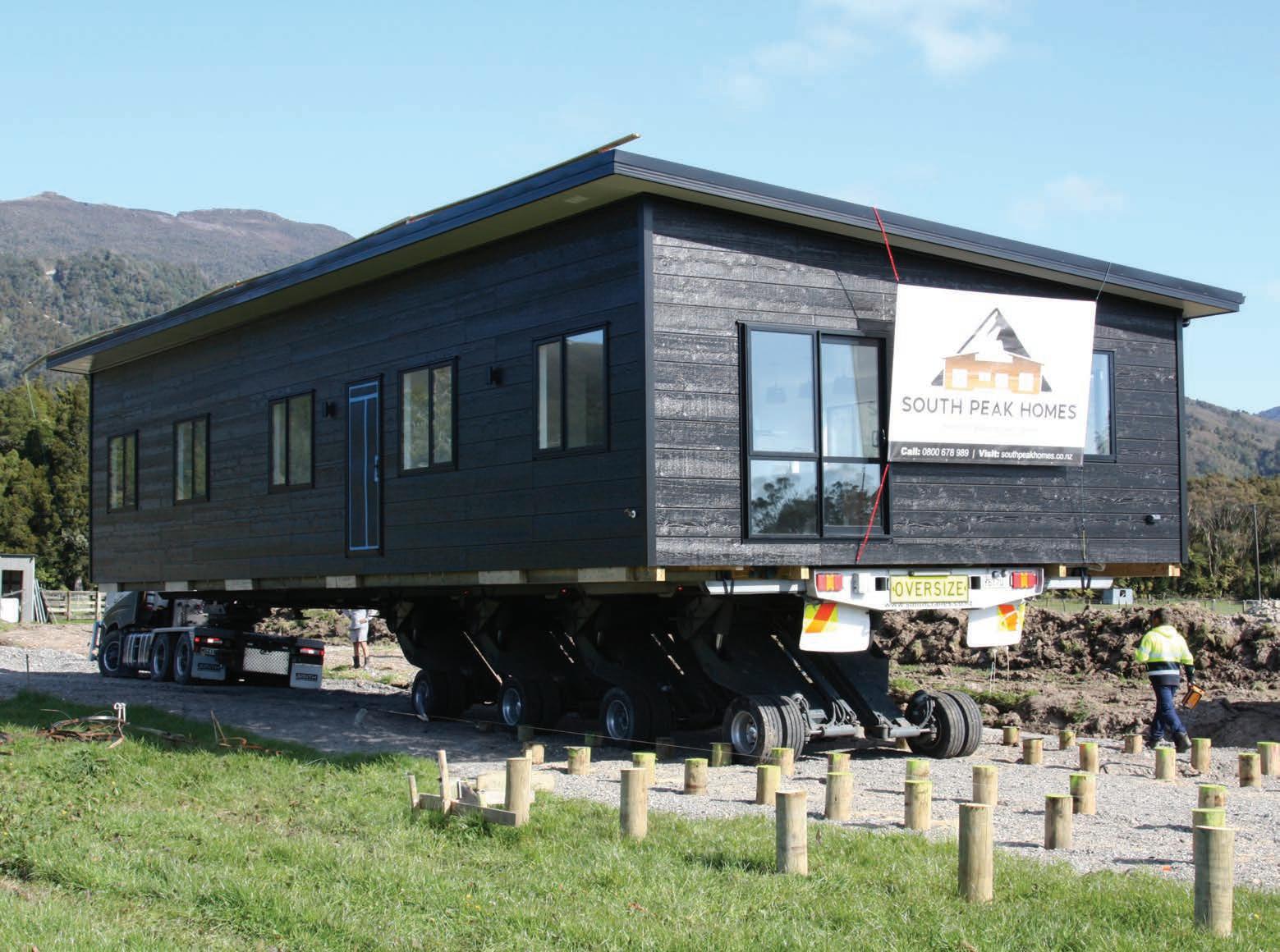



If


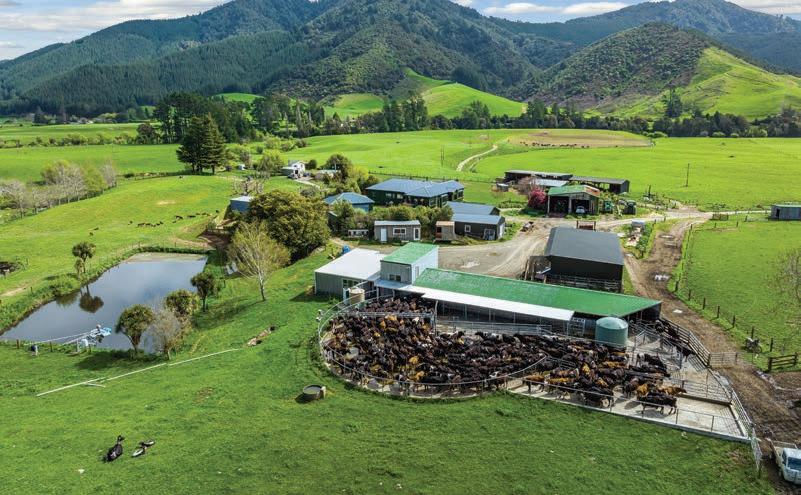

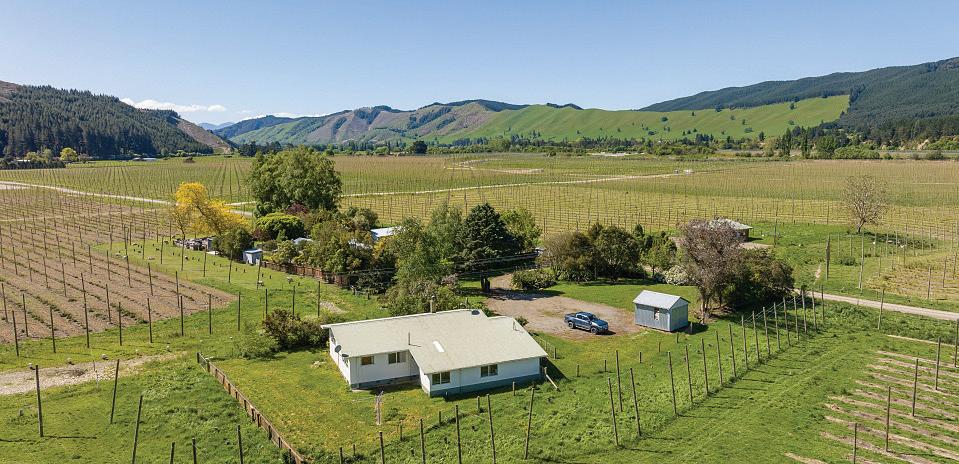
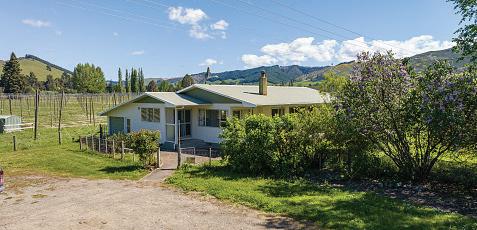

Autumn hasn’t been particularly kind to pastoral, horticultural, or dairy clients in the region as we have had the tap turned off for most of the year on the rainfall front let’s hope by print time, we have had some hint of a late autumn growth season. Throw into that the low product prices and that is a recipe for even more belt-tightening in the agricultural world across New Zealand.
On a positive note, PGG Wrightson Real Estate has sold two dairy farms in the Marlborough area as we have advertised in this paper. Probably the only two that will be sold in the top of the south this season, but this does reflect in the confidence returning to the dairy sector, especially for good farms in reliable areas and with strong neighbour interest. If you are selling and not having any joy how about giving us a call?
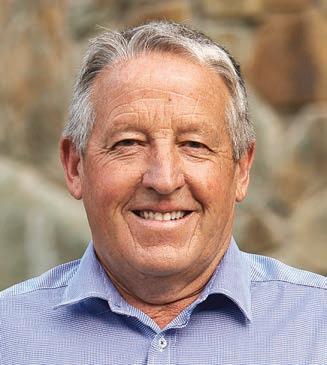
In real estate, I am continually reminded of what great people there are on the vendor and purchaser side of any transaction, we certainly meet some wonderful people in our travels, and we strive to make them pleased with the outcomes we present. We have arranged a clearing sale at 161 Bulford Road, Rai Valley for Tuesday, April 23rd. This will be one of the biggest in the top of the south in years and with really good quality gear to be sold, we urge you to attend even just for a catch-up with your neighbour.
The whole idea of getting off the farm is to
talk to some like-minded people who are no doubt facing the same struggles as you and ‘a problem shared is a problem halved’ in my opinion.
On the political front, I look forward to sacrificing a few frogs and snails in order to make the Resource Management Act more development friendly. I know you have to take Shane Jones with a grain of salt, but he speaks his mind and I hope we get things done as that is what New Zealand needs.
So, see you at the ‘Raidale Farm’ clearing sale, 161 Bulford Road, Rai Valley on April 23rd.
Have a great month.
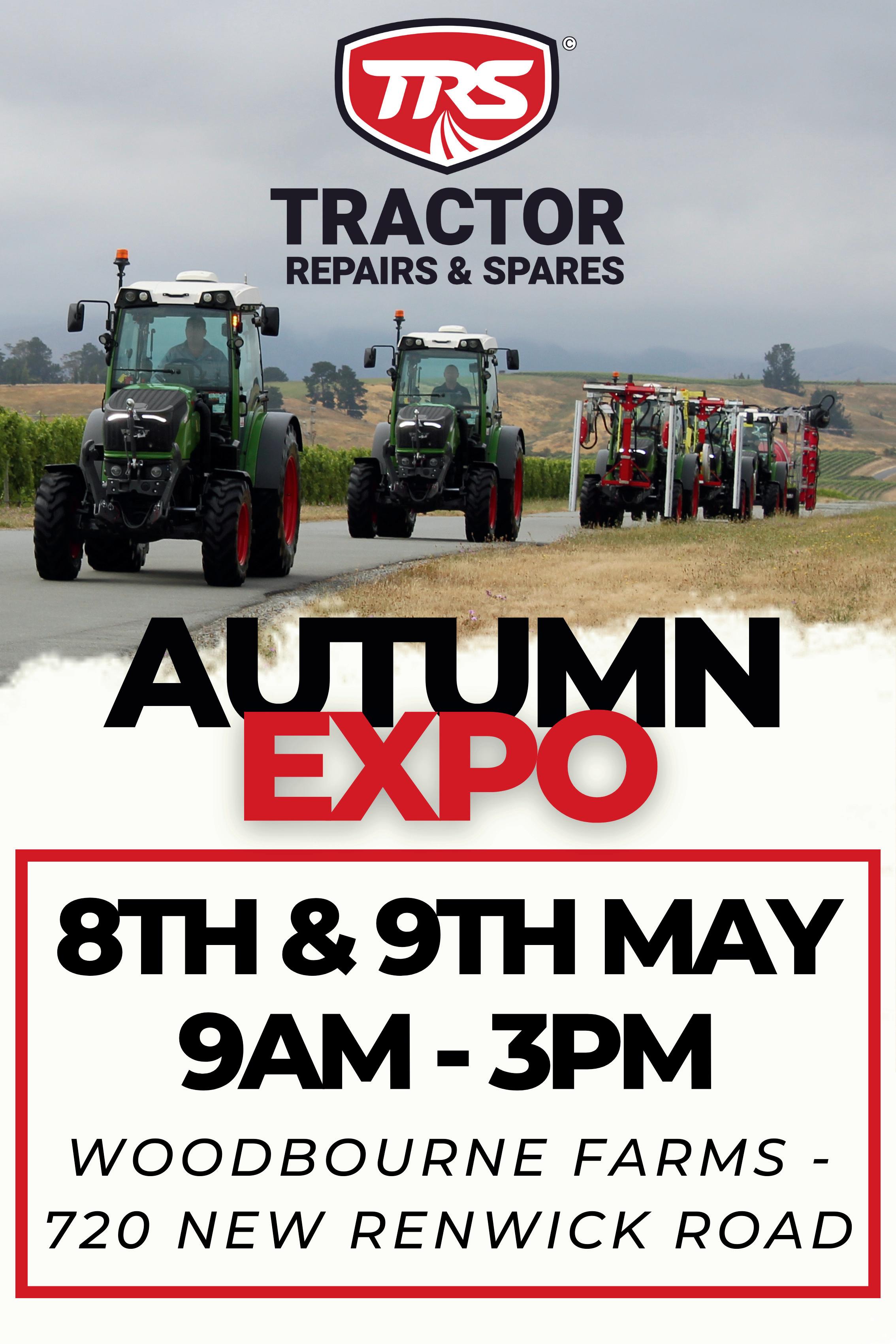




www.marlboroughmotorcycles.co.nz
Tractor Repairs and Spares Ltd (TRS) is getting ready to host their spectacular annual Autumn Expo on the 8 and 9 May at Woodbourne Farms, 720 Old Renwick Rd, from 9am to 3 pm both days. Since TRS first hosted an Autumn Expo field day in 2016, a one-stop for everything viticulture and agriculture, the concept has expanded each year, and this year is no exception. Alongside TRS’s impressive range of machinery and equipment, there will be representatives from most of their top brands - Fendt, Massey Ferguson, AGCO, TRS Sprayers & Equipment, ERO, Rata, Fieldmaster, MX Loaders, Farmgard, Hustler, Pressure Solutions, and more. They will be joined by other local businesses including Motorworld, Marine & Outdoors, Tasman Crop, Marlborough Motorcycles, Future Post, Liquid Action and Callahan & Martella. The expo allows loyal clients and supporters to view the latest viticulture and agricultural equipment and technology in a relaxed, family-friendly setting with a free gourmet lunch and hot coffee by Koffee Mobile. Three great spot prizes are on offer with entry open to all visitors. Top prize includes a family concession pass to Omaka Aviation Heritage Centre, a 20-minute scenic plane joyride, a daytrip into the sounds for two with Marlborough Tour Company and a voucher to enjoy a local restaurant meal!
Whether you need industry-leading
machinery or parts for tractors, grape harvesters, application, seeding, lawn or lifestyle equipment, or lubricant for your engine, transmission or hydraulics, TRS has your back.
With over 28 years of agricultural and viticultural knowledge, TRS has been expanding to continue delivering quality workmanship and outstanding service that they have built a reputation for. Demand for their knowledge and reputation for delivering on time has seen TRS expand so the team can continue to have the space, capacity, and resources to support its customers.
TRS has grown from a home-based business started in 1996 by Adrian Orchard, a fully-qualified technician working out of a service vehicle, with his wife Pam doing the bookwork, to a team of 80 staff.
From the beginning, when Tractor Repairs & Spares became a Massey Ferguson agency, to today, where TRS are the largest supplier of Fendt tractors in NZ, with five retail branches and a wholesale business, Adrian, Pam and the team have been continually expanding their customer support. From purpose-built premises and an increase in qualified and capable technicians, to securing premium and trusted products with knowledgeable people to support the products, the wellstocked parts departments in all branches ensure their customers can keep going at all times.
In 2010 TRS opened a second branch in Seddon – an important area of Marlborough’s wine production. The past few
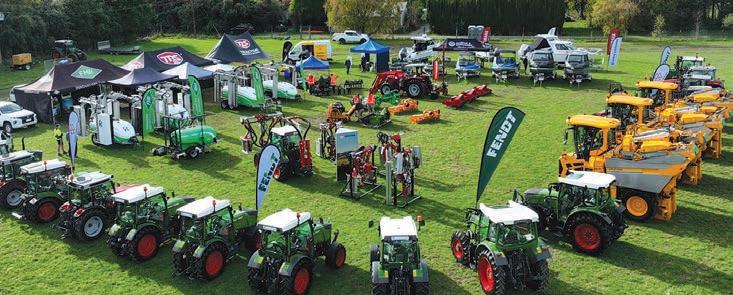









8th – 9th May • Woodbourne Farms
720 New Renwick Road



years have seen continued demand for TRS customers in the Awatere, which has resulted in the need to expand the Seddon branch. A plan is underway to double the size and capacity over the next few years.
In 2012, TRS were appointed AGCO’s agency for Massey Ferguson and Fendt in the Tasman region. A suitable workshop was found, and the TRS Richmond branch opened, providing the same quality products and trusted service that is known in Marlborough.
Roll on to 2016, and another step forward for TRS with the purchase of TFM Tractors in Hastings. A small, dedicated team threw the TRS banners up on the Omahu Road building in Hastings. Demand increased so TRS Hastings moved a few places down the road to a purpose-built building which provided more space and resources. The new premises had their grand opening in May 2023, located at 1145 Omahu Road.
In September 2020, Adrian and
Pam purchased FMR Sprayers forming a wholesale business, manufacturing sprayers & sweepers and distributing ERO Vineyard & Orchard equipment around NZ. TRS Wholesale are known for their market-leading technology in spraying equipment, particularly their vineyard recycling sprayers.
1 March 2024 saw TRS Wholesale re-brand their range of sprayers to align more with their company, replacing the FMR brand with their own, TRS Sprayers & Equipment. Still producing the same trusted sprayers, just under a new name.
2024 has already seen TRS Wholesale expand into more countries, including Canada. They continue to strengthen their dealer network across NZ too, signing up new dealers throughout 2023 to ensure their products are available and supported around the country.
As the NZ distributor & due to the growth in popularity of
Gregoire grape harvesters in NZ, Tractor Repairs & Spares opened a workshop for the sales, service, repairs & parts sales of all things Gregoire grape harvesters in December.
Located at 9a / 40 Waters Ave, Blenheim, the new space allows the team to provide specialised support, whilst freeing up some space at the Renwick workshop.
TRS Harvest operates 24/7 over the harvest period with their teams on shifts to offer first-class service for all their clients throughout harvest, day or night! With over 60 machines now operating in Marlborough alone, Gregoire has quickly become New Zealand’s leading harvester of choice.
The Gregoire moto is “Simplicity, Perfection, Reliability”, something the team at TRS are proud to support.
As Tractor Repairs & Spares continue to grow, their focus remains the same - provide first-class service & support. “It’s not about the breakdown it’s about how fast we can fix it”.
Our newly released TRS VN2-1500 & VL1-500 Sprayers will be on display at the Tractor Repairs & Spares Autumn expo8th & 9th May - come down and check them out!

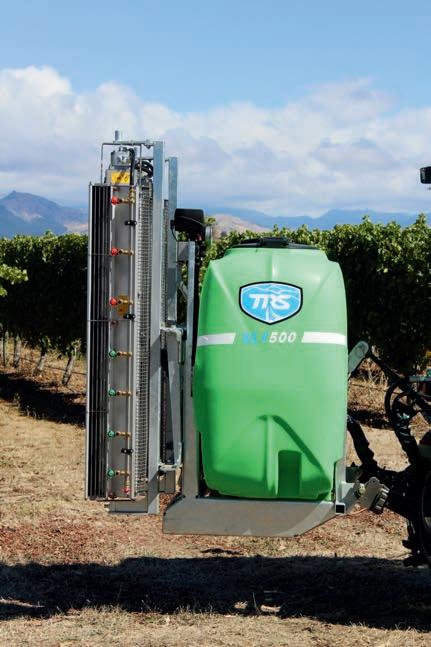
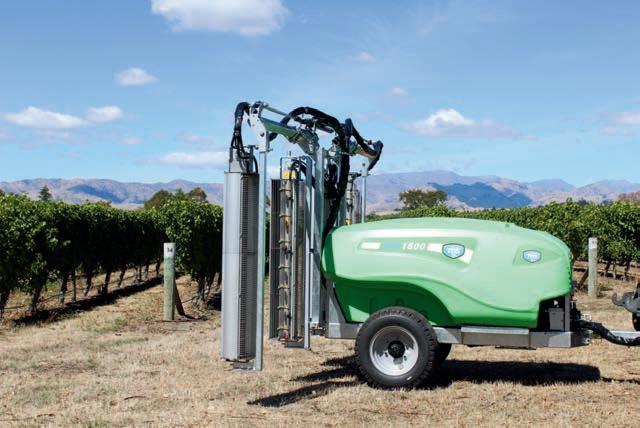



ELOISE MARTYN
Growing up on a Wakefield mixed farm of sheep, beef, and deer, with parents who were keen and capable mountaineers provided all the elements for Matt Vincent to grow up and develop into a keen hunter.
After completing an engineering degree at Auckland University Matt spent two years in Texas where, like NZ, hunting is part of their culture.
“Texas is an amazing place with whitetail deer, coyotes, wild pigs and the occasional zebras or giraffe roaming around,” Matt says.

If you have a title that was in grass but is reverting to native bush we may be interested in buying it. No vehicle access, wetland, steep, gorse, not a problem.
Contact: admin@forestherbs.co.nz
“Their main game is white-tailed deer and there is a lot of hunting done there.”
“Sure, as a teenager on the farm I took the gun out and I grew up spotlighting for hares, cats, rabbits, and possums but we didn’t hunt deer as I do now,” Matt explains.
“When I came back to Wakefield from my OE, the occasional bit of shooting, I had been doing turned into more.”
When Matt returned from Texas to the family farm in Wakefield, 8 years ago, he combined his hunting skills with his mountaineering passion and experience and hit
‘It’s great physically and mentally getting out there,’ says experienced hunter Matt Vincent, with dog Coco. Photo: Supplied.
the hills hunting.
Back then Matt says he was spending around 70 days a year hunting in the hills, often with overnight stays. Nowadays with a business to run and a family it’s more like 30 days which he says is more in line with his commitments.
“Hunting has many benefits. Being out in the bush often in the dark really helps build on your self-confidence and skills, for younger people I feel it helps build identity,” Matt explains, “you come home and feel connected and like you have achieved something.”


Matt realises that hunting alone in the backcountry has its risks, so he’s well equipped with a GPS mapping system that operates without

internet and a personal emergency beacon, he also joined New Zealand Deer Stalkers Association (NZDA) around four years ago.
“One of the key reasons I joined NZDA was that they have good public liability insurance, they are also great advocacy for hunting issues we face around firearm laws and game animals to hunt particularly on public land,” Matt says.
When backcountry hunting carrying as little weight as possible makes the trip a little more comfortable and what started as a practical solution to his needs has morphed into a full-time occupation for Matt.
“Initially I modified other people’s packs and products solely to reduce weight, which is essential when covering large distances. Ffrom there, with my engineering
Canterbury’s alpine horizon embracing the Southern Alps is impressive particularly on a clear winter’s day. That distant alpine skyline drew author Andy Buchanan as a youngster towards it. Family holidays took in tramping and skiing and thus grew a love of the mountains to the west of Christchurch. Through
knowledge, I began the process of designing and manufacturing my products,” Matt says.
The functional and lightweight MTNGear now has a reputation nationwide and in North America, however Matt says that the industry has challenges.
“You can’t advertise anything related to firearms, shooting or hunting easily and for these reasons, we can’t advertise any of it with Google,” Matt explains. Regardless Matt says it’s slowly but surely growing, and he enjoys working in an industry he is passionate about.
“I enjoy getting away from cell phone reception and the dayto-day stress of life,” Matt says, “sometimes I hunt with my sister and her partner which I enjoy, other times I’m on my own. Either way it’s great physically and mentally getting out there.”

text and excellent photographs, the author describes the peaks and the climbs that he and his companions have accomplished. It’s a book that will inspire keen trampers to explore the mountain areas that Andy Buchanan knows so well.



A rare second chance of a lifetime
99 Redwood Park Road, Redwood Valley

Due to unforeseen circumstances, this property is on the market again. Nestled on an elevated site, this home boasts breathtaking sea views over Tasman Bay. Upon entry, experience the warm, inviting ambiance, complemented by high ceilings and ample natural light flooding through expansive windows.
The spacious living and dining areas seamlessly extend to a large outdoor entertainment space – ideal for Tasman’s balmy evenings.
With four generously sized bedrooms and two lounges, this thoughtfully designed home offers flexibility, easily accommodating extended family or rental opportunities. Multiple outdoor spaces cater to every occasion, from morning coffees to soaking in the late afternoon sun.
The meticulously developed land features rolling to steeper grazing areas, with 13Ha recently converted from forestry, boasting quality infrastructure including farm sheds, workshops, cattle yards, and reliable water access.
Tender: Closing Tuesday 16 April 2024, 1pm (NPS)
Licensed Agent REAA 2008

Toby Randall
M 027 233 9170 toby.randall@harcourts.co.nz

Elisha Shefford
M 021 354 742 elisha.shefford@harcourts.co.nz



Driving
This 618 HA block at Snake Creek has something for everyone, so whether you’re a seasoned farmer and want to farm or add this to your farming portfolio, or someone wanting to own a slice of paradise that will actually more that help pay its way with 3 income streams currently in place: With multiple
or retreat or perhaps explore
this, or a cabin amongst the manuka looking out over Paturau Beach and the rugged West Coast.

Toby Randall
M 027 233 9170 toby.randall@harcourts.co.nz
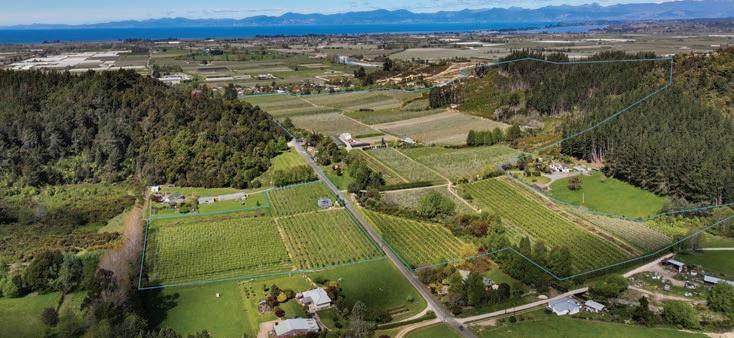
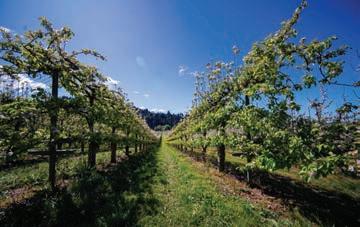
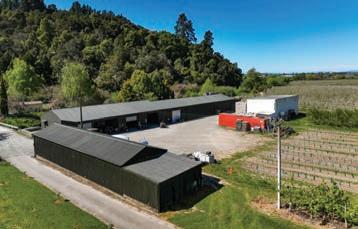
85 Brooklyn Valley Road, Brooklyn
For the first time if 150 plus years, this established family owned orchard with quality production history is offered to the open market.
Of the 51.87 HA, 23.77 HA are planted in a variety of apple and pear trees, over 46,000 plants, with irrigation rights in place.
The balance of the land is utilized for other improvements, including large pack house, cool store, workshops and a bonus of approx 30 HA of easy to steep hill planted in exotic forestry and natives. Excellent accommodation options for seasonal staff with stand alone workers cottages and a RSE accommodation unit, plus the main 4 bedroom dwelling, that has been renovated on an elevated sunny site – complete with a sea view.
Licensed
Price By Negotiation TOBY

Toby Randall
M 027 233 9170 toby.randall@harcourts.co.nz


We know this summer has been a tough one with a wide spread drought effecting the majority of the Top of The South.
Even if your Rural or Lifestyle property is still looking a bit dry, it’s not too late to look at bringing it to the market this Autumn, with
027 233 9170 |
 Vaila Orchard Riwaka Tasman
Vaila Orchard Riwaka Tasman

The Top of the South Forestry Awards are on again this year celebrating the important of the people that work within the forestry industry. It also provides an understanding of the breadth of the skilled workforce, the career paths that are available and the diversity of jobs within the industry. Supported by local forest companies and service providers, councils and local ports, the event has had amazing ongoing sponsorship which backs up the importance of the industry to both Tasman and Marlborough across the top of the south region.
Last time the event was held in 2022, Grant Puklowski was the toast of the Top of the South Forestry Awards after heading home a highly competitive group of his peers to win the Skilled Professional of the Year title. He was celebrated as a true lead-
er in the industry, a mentor to many, and one who genuinely cares about his team at Puklowski Silviculture, their work, their clients and the ongoing future of forestry.
Mr Puklowski, who earlier in the evening had also won the Forestry Excellence certificate, is one of OneFortyOne’s highest-performing silviculture contractors, but he’s quick to share the praise with his team. He invests a lot into training his team and making sure they are well looked after, and that continues to pay off for him with many who have stayed with him for 20-plus years. A leader by example, he also takes on school leavers training them up and giving them a chance in the industry. A 30-year veteran in forestry, Mr Puklowski followed his father into the industry, just as his own children are now working alongside him.
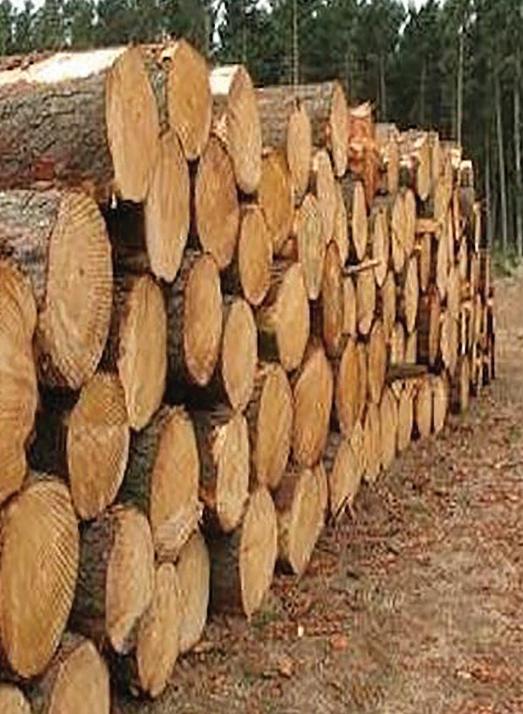
Also that same night, the industry saw the first induction into the Hall of Fame, with Darryl Bird acknowledged for the significant role he has played in the Logging and Forestry Industry Training Board and his contribution to the wider industry.
Mike Fraser of Fraser Logging was honoured
as the Hero of the Industry for his massive investment, contribution and input to forestry in the region.
The Crew of the Year Award went to Bryant Logging 730 Hauler Crew with Kelly Logging taking the Outstanding Environmental Management crown, Steve Borlase from Borlase Transport walking off with the Outstanding Health and Safety Management Award, and Buck Forestry Services rewarded with the Outstanding Regional Service Performance award.
This year the categories are similar with a few new ones added, the one of interest will be the people’s vote on the Good Deed Award. Nominations are open and a good deed by an industry player can be submitted to go into the lineup and on the awards night, the recipients and their deeds will be acknowledged and the people on the night will select their best vote.
MC, Simon McKinney will take the winners up on stage and manage the night as its always been a sell out, the organisers expect it to attract over 500 ticket holders on Friday 17 July at the Trafalgar Centre, Nelson.
Proud to Sponsor:

GOLD: DC Equipment, Port Marlborough, One Forty One, Port of Nelson, Tasman District Council, Tasman Pine Ltd, AB Equipment - Tigercat, TDX, Top South Media
SILVER: Competenz – Te Pukenga, Taylors Contracting Co., NPD, CrediFlex, P F Olsen, Total Energies, NZME, Vertex Lubricants, UDC, Loggers Shop, Hauler Engineering, WIDE Trust, Pacific Forest Products, Tasman Forest Services Ltd, Stuart Drummond Transport, Tasman Heavy Diesel
BRONZE: Trimble, Robinson Forest Management, Komastu, Borlase Transport, Forest Industry Contractors Association, Machinery Repairs Limited, Te Uru Rakau NZ Forest Service, Mechanised Cable Harvesting, Deals on Wheels, Top of the South Wood Council
For more information contact Lydia at: lydia@publicimpressions.co.nz or 027 716 9557 www.totsforestry.co.nz




‘Understanding kea use of plantation forestry sites is vital for guiding effective conservation management strategies and ensuring that no negative interactions occur between kea and forestry workers and their equipment,’ says Jodanne Aitken who is conducting a first of its kind kea study in OneFortyOne’s forest. Photo: OnefortyOne.
A preliminary study has been published documenting kea habitat use, movement, and diet in forestry company OneFortyOne’s forests in the Nelson Tasman region.
The study, conducted by Lincoln University Masters student Jodanne Aitken, and funded by forestry company OneFortyOne, confirmed that kea are residing and utilising food sources within pine plantation forests in the Nelson Tasman region.
Jodanne said very little is known about kea occupancy, behavioural ecology or habitat use of plantation forests. “It’s a preliminary study, which gives us a better insight into kea beahviour in pine plantation forests and help us understand what might be keeping them in the pine forests, said Jodanne.
“It is thought kea may utilise plan-

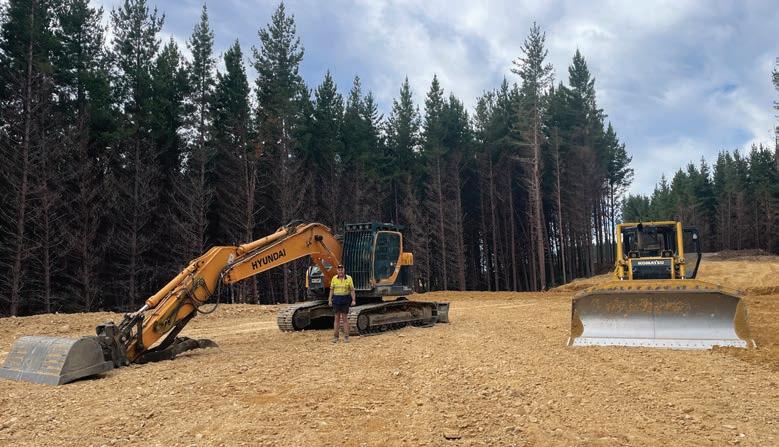


tation sites to forage for seeds and insects and could possibly even seek out plantation sites at particular phases of forestry activities, for example immediately post-harvest to find specific food items.
“The study used GPS-VHF units to track the movements of three kea through the forestry blocks, I also recorded feeding observations of kea in the forest,” Jodanne said.
Jodanne noted the kea in OneFortyOne’s forest were different to those she had previously studied further south.
As a Ph.D. student, it’s not often you’re outstmarted by your study species, but Jodanne said the kea in the Nelson Tasman forests were the hardest birds to catch out of all kea in the country. “It took almost four months to lure the birds in,” she said. “The kea studied tended to sit up in the trees more and are not observed on the ground as often. This behaviour is similar to
what we would see in Okarito in the West Coast, the diet was also similar with them eating mostly invertebrates and seeds.”
“Understanding kea use of plantation forestry sites is vital for guiding effective conservation management strategies and ensuring that no negative interactions occur between kea and forestry workers and their equipment.
“The numbers of kea are sadly low (~5000-7000 kea remaining), we need to understand them better in all their environments to conserve them. It would be great to see more large land users replicate the investment OneFortyOne has made, we all need to work together to protect these beautiful and extremely clever birds,” said Jodanne.
OneFortyOne has contributed $100,000 to a suite of Kea Conservation Trust projects, including this study focused on kea habitat use and diet in plantation forests.



STAFF REPORTER
ACC is investing NZ$22 million to help create safer workplaces in New Zealand. The workplace injury prevention grants aim to improve health and safety by developing, sharing, investing in, and implementing solutions to problems. The five-year programme began in 2019 and now the fifth round of grants will focus on the manufacturing sector. Manufacturing is one of New Zealand’s biggest sectors, employing around 200,000 people, but it also
experiences one of the highest rates of harm and injury. In 2022, injury claims in manufacturing resulted in 240,400 lost workdays.
ACC are looking for initiatives that can eliminate or significantly reduce hazards and lower injuries through Good Work Design approaches or the adoption of effective technology and/or engineered solutions.
Applications need to demonstrate how they aim to improve access, experience, and outcomes for Māori and uphold Te Tiriti o Waitangi
principles. They should also demonstrate how they will aim to improve equitable outcomes for workers at higher risk for injury and increase worker participation and representation.
Businesses don’t need to work in manufacturing, but the initiative needs to show direct benefits for the sector. Applicants can apply for between $50,000 and $500,000 (excluding GST) per year for a maximum of three years and applicants will need to co-fund at least 20%. Visit www.acc.co.nz for further details.

With over 30 years experience in the industry the Forest Management Group offers services in:
• Forest and woodlot harvesting
• Domestic and Export Log Purchase
• Forest Establishment
• ETS advice and management
• Forest Valuation
To

Tasman Forest Management, Forest Management Limited and Forest Management North Island are unifying under one umbrella: Forest Management Group. This is a significant step forward in our journey towards operational cohesion and enhanced service delivery.
This consolidation represents a move aimed at streamlining our operations, maximising efficiency, and providing a unified experience for our valued partners and clients. By bringing together the expertise and resources of these three entities, Forest Management Group will be better equipped to meet the evolving needs of the forestry industry while ensuring safety, great local service and environmental responsibility remain at the forefront of our operations.
As Forest Management Group, we will maintain the same level of commitment to excellence, reliability and innovation that you have come to expect from us. Our unified structure will enable us to deliver seamless service, tailored solutions, and consistent communication across all aspects of our operations.
What does this mean for our Clients and Customers?
1. Enhanced Expertise: By pooling the talents and knowledge of Tasman Forest Management, Forest Management Limited and Forest Management North Island, we will offer a broader range of expertise and solutions to address your specific needs.

2. Value Optimisation: Our larger team will continue to create value for clients in the establishment and growth of forests and in the harvesting at an optimal time and to highest value options.
3. Health and Safety: We will continue to be an industry leader in this key area on behalf of our contractors, clients and stakeholders.
4. Continued Focus on Sustainability: Our dedication to sustainable forestry practices remains steadfast. Forest Management Group is committed to upholding the highest environmental standards and contributing positively to the communities in which we operate.
Over the coming months, you’ll notice our signage begin to change over to the Forest Management Group logo but your local contact will remain the same.
Forestry can provide diversity of income for farmers on their less productive land. For new plantings returns from carbon provide cashflow through part of the rotation with returns at harvest still available. There is also a good opportunity for land owners looking to retire less productive land into Native regeneration to receive revenue from carbon.
We are excited about the opportunities that lie ahead as Forest Management Group and look forward to continuing our successful partnership with Clients and Customers.

History is a great predictor of the future, and the log market is no different. March export prices make it feel as though we’re trying to climb a barbed wire fence, but the problem is we’re currently stuck with one leg on either side, our crotch is snagged on a barb and our feet are slipping. We’re starting to feel some pain and we’re not sure how much more we’ll have to endure before our feet find firm ground.
March prices have dropped around $10/M3 from February and while a drop was not entirely unexpected, the quantum is a pain point.
Foreign exchange jumped a cent early in the month following the Reserve Bank Governors’ comments and a
generally weaker greenback. Freight has caused our feet to slide the most with the Suez Canal scuffle increasing the bulk vessel demand in the Atlantic and resulting in a shortage of vessels in the Pacific. This has resulted in vessel costs increases of around $US8/m3 over the past 6 weeks and unfortunately, like Adrian Orr, these shipping issues are problematic and likely to be around for a while.
The general outlook for China hasn’t really changed with the property market in its third year of downturn. The country’s leaders have just finished their week-long national congress with pledges to boost employment and stabilize the property market, which has historically made up around a quarter of the economy.
There’s no denying the need for a reduction in NZ supply to match the new level of demand in China and this is happening slowly. Volume from our cousins over the ditch has resumed into China, albeit at a low but not insignificant level, and supply from other countries has reduced to a trickle due to a myriad of issues. We have seen a couple of vessel head to India from NZ in recent months, but this isn’t a silver bullet – yet.

The
TheProfessionalForest ManagementCompany ofChoice.
PF Olsen is the leading provider of
TheProfessionalForest ManagementCompany ofChoice.
PFOlsenistheleadingproviderofindependent professionalforestryservicesinNewZealand.
Contactusnowforallyourforestmanagementneeds:
So, it looks likely that the next few months may be a bit sticky in terms of prices. Domestic demand will keep the tiller steady, especially for pruned forests, but it may take a while to gain some solid footing on the export front. All going well, we’ll hopefully be able to replace our torn undies later in quarter 2.
PFOlsenistheleadingproviderofindependent professionalforestryservicesinNewZealand.
Contactusnowforallyourforestmanagementneeds:
•Harvestmanagementandlogmarketing
•Harvestmanagementandlogmarketing
•Forestestablishmentandtending
•Forestestablishmentandtending
•Forestvaluations
•Forestvaluations
•Duediligenceonforestpurchases/sales
•Duediligenceonforestpurchases/sales




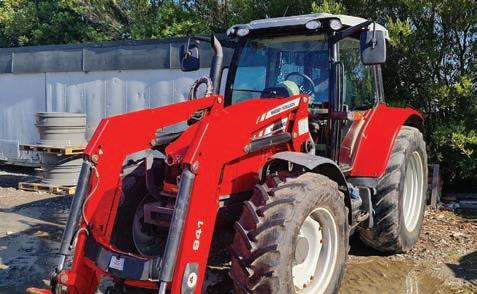

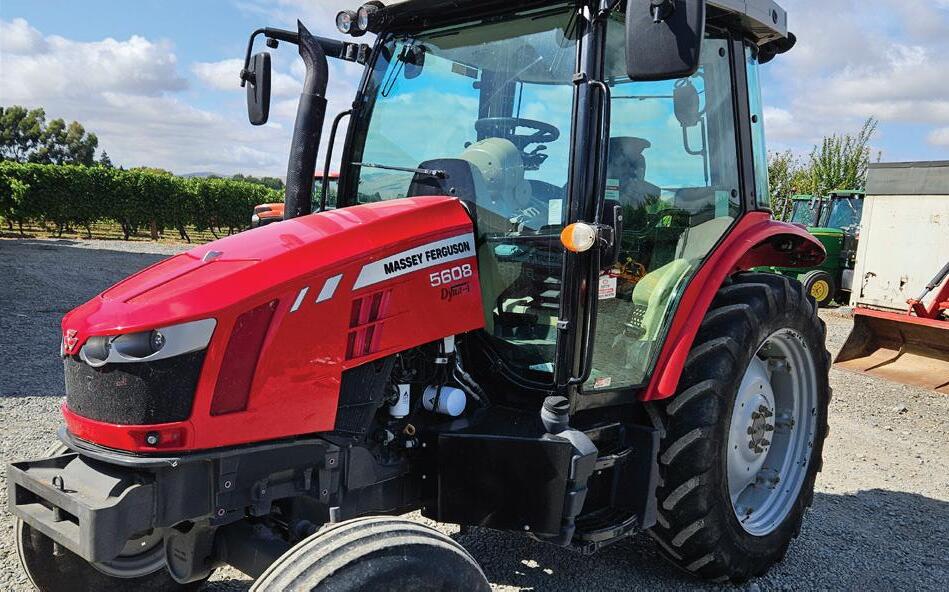
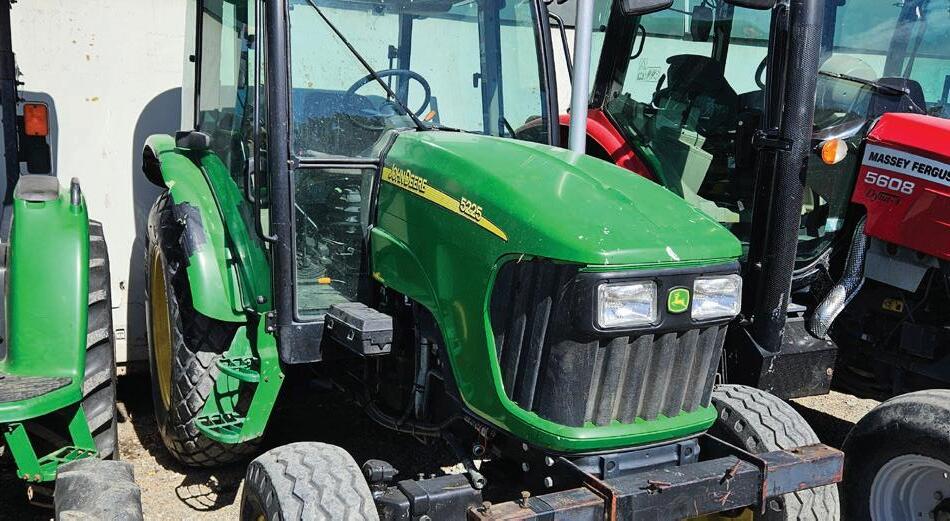

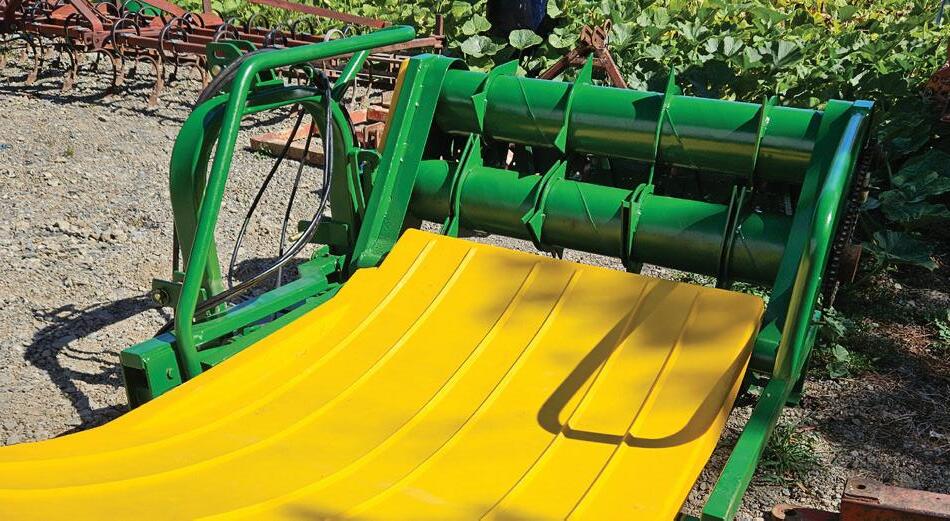

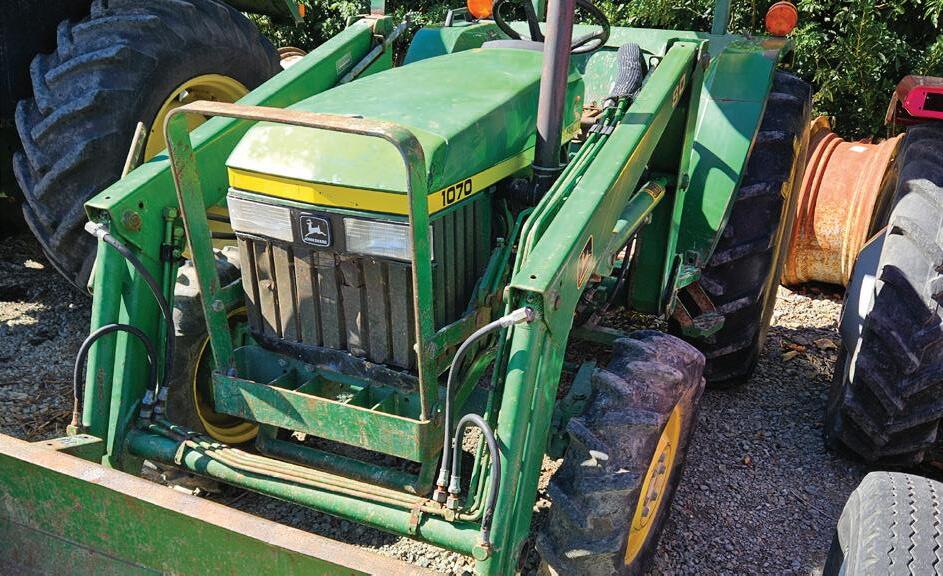

• Ford New Holland 7840 SLE and Pearson loader - $19,500
• Iseki 6500 and loader - $12,500
• Massey Ferguson 245 power steering good rubber. Tidy order. New seat and serviced$10,500
• Welger B435 Master Baler, farmer owned$25,000
• Bucktown 1.8m h d mulcher hy side shift like new good hammer flails - $6,750
• Vicon PZ 360 haybob late model in very good order - $4,750
• Small 1.5 slasher - $1,600
• Giltrap 3pl log splitter - $2,250
• Heavy duty 7ft back blade hy rams to angle and tilt - $6,500
• Hustler front fork lift suit 135 MF - $2,000
• Trimax 1.8 Vineyard Mower, tidy order - $3,000
• Rata vineyard cultivator crumbler range of sizes available
• Dual wheels Snap/locks 38” 36” 34” 30” from - $2,200
• Fieldmaster 275 topping mower, all serviced, good condition - $4,950
• Silvan 600l herbicide sprayer electric controls$5,000
• Celli Tiger 190 Rotary hoe new blade 3m wide cage roller - $9,500
• Kvernland TLA 6 metre cultivator crumbler$8,500
• Silvan 600L sprayer PTO shaft plus reel & gun$2,500
• Mole plough good order - $1,850
• Rata pallet fork euro hitch - $1,250
• 9ft cambridge roller, very good order - $2,800
• Yeoman chisle plough 9 tyne - $2,200
• 2m cultivator - 2 to choose from
• Used cambridge roller rings
• Berti 1.6 mulcher very good order - $6,750
• Berti 1.6 picker mulcher - $5,500
• Howard AR 80” rotary hoe - coming in
• Duncan 633 Culivator Crumbler - $5,000
• 2000l trailing overow herbicde sprayer hy fold , fully serviced complete with autorate controller$6,500
• Hitachi EX2.5 blade and new tracks had full service and going well 3 buckets quick hitch Available next month
• 3 metre leveling bar 3pl - $2,200
• Vicon 302 spreader like new - $2,400
• Brevigleri 1 8 mulcher runs up well - $3,500

Fertilizer New Zealand
Autumn is typically a time to plan for the next season. This is true of any type of farming practice.
For Dairy it is a time to put on Lime and in some cases Magnesium to help get the levels correct in the soil structure while also improving the levels of Magnesium and Calcium in the leaf of the pasture and, therefore, in the diet of the animals during Springtime.
It is worth bearing in mind that what goes on the soil will impact
either good or bad on the plant, and what is in that plant will have an impact on the animal that eats the plant. An animal’s diet is largely or wholly made up from the pasture that they consume.
In the case of Calcium and Magnesium, if either of these elements is in short supply or if the Potash levels are too high and not in the correct ratio to each other, then there is a real chance of grass staggers and milk fever in the herd during Spring.
The application of Calcium and Magnesium in Autumn will help
but will not totally alleviate the problem. Monitoring and supplementing will still be required during this critical period.
For over 20 years Fertilizer New Zealand has been using VitaLife Magnesium to bring the soils and the pastures back into a more balanced nutrient status.
VitaLife is a biologically active solid designed to increase organic activity, speed up the natural nitrogen cycle, improve soil structure and make more nutrients plant-available in the soil.
Down in the soil we have found
the structure has changed with less compaction.
The soil has increased granular aggregates with more earthworm activity, colonies of beneficial fungi, and microbes observed on the root of the plant.
The roots themselves have been longer, giving the plant more energy and more ability to hang on longer in adverse weather conditions such as dry spells.
The first area in the soil to dry out is the top, but if the roots are down deeper than 100mls to 200300mls, the moisture at this level

In November ’23 Australian fertiliser company ‘Marnco’ announced they would be expanding into New Zealand, in 2024, saying they were ‘bringing innovative and sustainable fertiliser solutions to the agricultural sector. Dedicated to providing environmentally friendly options tailored for New Zealand’s farmers.’
The company entered the
Australian fertiliser market in 2018 and has since become popular in Victoria and South Australia.
The company says they are ‘excited to contribute to a sustainable agricultural future in New Zealand’.
Marnco has a decent amount of phosphate due to arrive in NZ in April and many in the agricultural sector are saying that they would welcome alternatives from the two main current fertilizer suppliers.
will help the pasture to survive for longer.
The same goes for soil temperature; the pasture will hang on longer in the Autumn and grow faster in the Spring, giving a longer growing season.
VitaLife has been shown to be beneficial in growing pasture quantity and quality which leads on to a healthier animal and better production.
For further information, please contact Fertilizer New Zealand Limited on 0800 337 869 or visit our website www.fertnz.co.nz

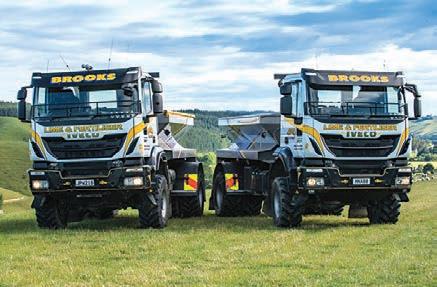


It’s highly likely that most oft, the name Ford resonates with people as Ranger, still the most popular vehicle in New Zealand. However, for more than a century Ford has produced cars, and more latterly appearing with electric assistance. Such is the AWD Hybrid version. With the introduction on April 1st, the RUCs imposed on PHEV and EV cars will make most of them more expensive to run than ICE-only powered vehicles. The Hybrid I drove makes sense as it avoids the RUCs while still maximising economy, and towing up to 1500kg braked compared to 1200kg in the PHEV.
The Escape pictured here is on my parched North Canterbury farm. Like the country in Marlborough and Nelson, the need for rain is now critical.
Driving on long dry grass has its dangers, with the extreme heat from the catalytic converter and

the exhaust care needs to be exercised. 200mm ground clearance helps here as it does on highcrown unsealed roads.
The AWD is normally driven through the front wheels with power sent electrically to the rear when traction or stability is needed. In practice, the Escape holds the road and tracks with a tenacious grip that is only challenged in severe conditions, such as deep mud!
Slightly larger than our Hybrid Subaru XV the Escape is powered by a 140kW 2.5 litre Atkinson cycle 4-cylinder petrol engine with a 1.1 kW hr lithium iron battery backup. It feels much more powerful than the Subaru we tested it out against, despite extra size and weight.
The Atkinson cycle motor generally means you start off silently in electric mode until you need extra power from the petrol engine or



the battery capacity drops below about 30%. So, we could easily move around the farm on short journeys without burning hydrocarbons.
Once on the open road the 2.5 litre ICE (Internal Combustion Engine) took over and provides very quick acceleration when needed, as it is assisted by the battery power.
The 12-inch Infotainment TFT screen can be set to show when power is sent to the battery in green or being used to move the vehicle in blue. It also shows which wheels are driven. There is a default economy mode and a sport selection that showed a smidgen more blue than the green when driven more sedately. Okay, a lot with me driving. In my defence, the Escape is very satisfying punting along through corners and sharply accelerating out of them showing off the sports-tuned suspension. It holds the road, while the well-proportioned and electri-
cally heated front pews cosset the occupants.
It’s very well-specked, including a huge opening sunroof, a heads-up display for the driver, GPS, rear and front cameras auto-park assist, and keyless entry/push button start. Leather seating is provided for five, rear is 60/40 split. The rear seats are also sliding to allow more cargo to be carried in the 560l boot. The electrically opening hatch seemed slow, though works easily.
Odd too if I’m honest is the auto-trans selector that controls the eCVT. You can only select D on the rotary dial. There is an L button though in the centre that holds low gear. Switching automatically selects Park while the electric handbrake can be applied manually. At a shade over $62k with a fuel consumption claimed at 5.6l/100km [tested 5.9] it should be on your list to try out if you’re looking for a sensible Hybrid without power cord problems!






New heavy vehicle registrations were up 7.7% year-onyear in February while used trucks were up 3.2% for the period.
Total registrations of new trucks and buses over 3500kg
GVM sits at 656 units for the month compared to 609 in the same period last year.
Used trucks over 3500kg GVM saw 163 units registered in February compared to 158 in the same period last year.
Isuzu is the market leader for new trucks in February with 112 units registered and 17.1% market share. This is up 16.7% compared to the same period last year which saw 96 units registered for the brand Fuso is second, down 12.4% y/y with 92 units registered
and 14% market share.
Scania is third, down 1.9% y/y with 52 units registered and 7.9% market share.
Iveco follows, up 36.1% with 49 units; Hino down 41.5% (38); CRRC (35); Volvo up 10% (33); Mercedes-Benz down 40% (30); DAF up 33.3% (28) and Fiat up 17.4% (27).
Isuzu was also market leader for used trucks, up 6.3% y/y with 34 units registered and 20.9% market share.
Mitsubishi was second for used trucks, up 14.3% with 32 units registered and 19.6% market share.
Hino was third, down 19.4% with 29 units registered and 17.8% market share.
Toyota follows with 29 units registered, Nissan (12), Volvo (6), Fuso (4), Mazda (4), Citroen (1) and DAF (1).
NZ coastal shipping operator Pacifica Shipping is introducing fully electric battery swap trucks to create one of New Zealand’s lowest-emission supply chains for heavy freight.
The company, a division of Swire Shipping (NZ), received NZ$252,000 in co-funding from the Energy Efficiency and Conservation Authority (EECA) towards the project.
It will help deploy two XCMG E700 electric trucks, supplied by local distributor Etrucks, to move full containers for the first and last mile at the ports of Auckland and Christchurch. The project is poised to achieve a significant reduction in carbon footprint by eliminating 5,100 conventional combustion engine truck movements and reducing carbon dioxide emissions by up to 250 tonnes annually.
Coca-Cola Europacific Partners (CCEP) have joined the initiative
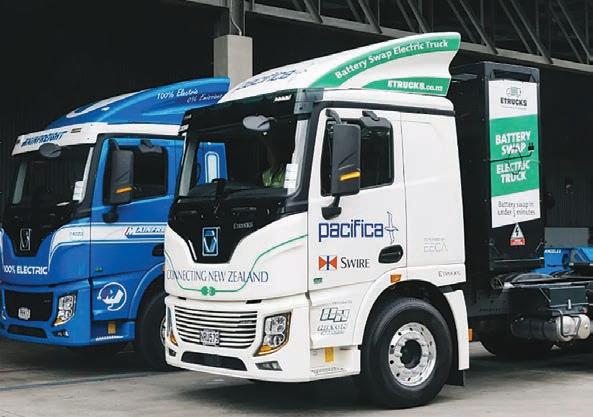
as a product partner while Mainfreight and Hilton Haulage have been brought on board as inland transportation partners. The first phase of the project will see the commencement of Mainfreight operating the battery swap trucks between CCEP’s Mount Wellington site and the Port of Auckland. Operations will soon be ex-
panded to Christchurch with Hilton Haulage operating between Lyttelton Port and CCEP’s Woolston site. The E700’s battery swap technology enables the rapid replacement of discharged battery modules with fully charged ones. This technology minimises operational downtime and enhances productivity.


FROM PAGE 1
A decades-long campaign to eradicate Bovine Tuburculosis from the Buller region is nearing complete success with only one infected herd left in the area.
Buller has a long history of TB infection (Bovine Tuberculosis) in both wildlife and cattle herds, with a huge number of cattle infected in the 1960s, 70s, and 80s. Farmers lost huge numbers of animals, and some were unable to continue dairying.
Over the past decades, farmers and TB staff have worked hard to eliminate TB from herds and are seeing the results.
“The number of infected herds in Buller district is now down to one - a huge feat,” says Heather Alexander, OSPRI regional partner for the Upper South Island.
“While possum control continues, farmers will benefit from fewer testing requirements as the risk of TB in livestock is reduced.”
OSPRI is the national organisation that works with the farming industry to manage animal diseases - especially TB - in New Zealand.
“In February 2023, significant areas in the Grey and Buller Districts shifted to annual testing of all cattle and deer over 12-15 months old .”
This change was met with relief by farmers who have gone their whole careers battling the TB disease and having to cater to rigorous TB testing. In February

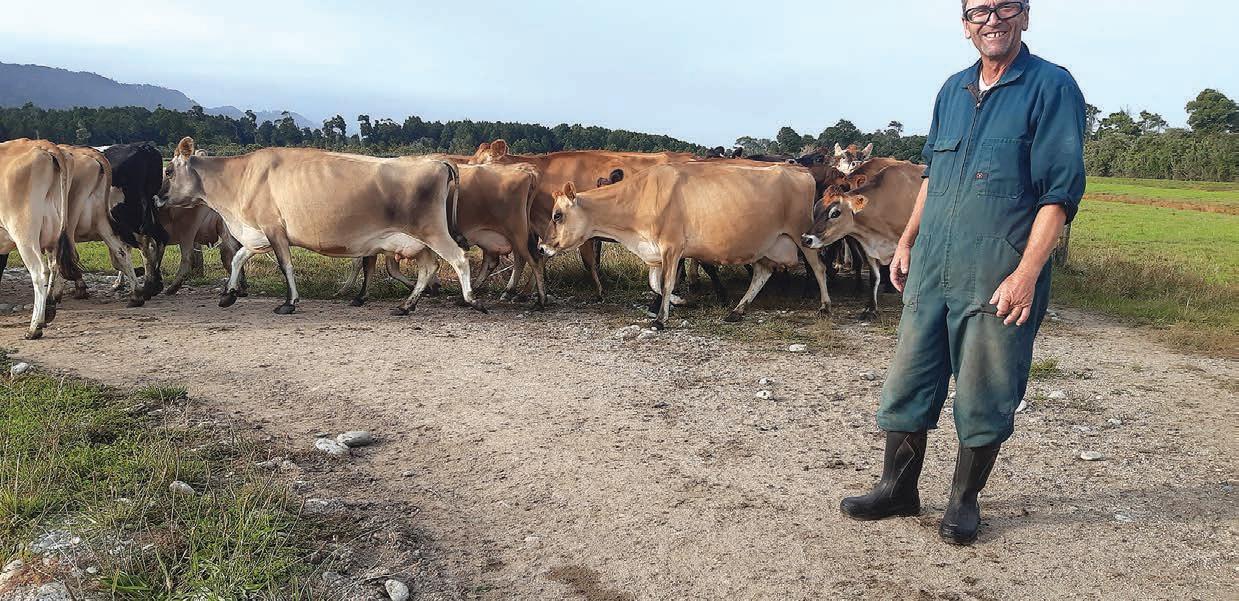
2024, an additional portion of the Buller District was revoked from a Movement Control area, moving to annual testing.
Brian Jones, a fifth-generation dairy farmer running a herd of 225 cows south of Karamea, who has volunteered over 10 years of his time to the OSPRI committee, says all farmers in the area have a connection with the Kahurangi National Park or native bush areas which are corridors to the Kahurangi which keeps the risk real.
“Testing stock can be another pressure to farmers with having to get stock in for testing, waiting for the results, and re-testing
OSPRI is getting closer to eliminating Bovine TB from New Zealand. We have gone from 1700 herds in the 1990s to less than 20 herds at the start of 2024. Our goals: Livestock free of TB by 2026, Possums free of TB by 2040, and TB eradicated from the whole of NZ by 2055.
TBfree works by eliminating the risk of TB in possum populations, with some areas of the country being at a heightened risk compared to others. TB testing of livestock in high-risk areas is more frequent. The fact that OSPRI has been able to reduce testing frequency now in so many parts of the Upper South Island and particularly the West Coast continues encouraging progress towards those TBfree goals. Depending on what part of the country you’re in, you could be testing anywhere between annually to every 5 years. It’s very dependent on the risk of TB in that area.
Movement control areas remain in parts of the Upper South Island, though now they are the minority. These areas require annual testing and pre-movement testing of stock leaving the farm. A huge amount of work has gone into releasing parts of the Top of The South and particularly the West Coast from these types of restrictions. Things are progressing well.
if required while not knowing the outcome,” Brian explains. “In the mid-80s we had a herd of 150, on one occasion we had 23 cows react to the test,” he recalls. Animal health is at the forefront of keeping TB away, however it is a threat to human health.
“TB is not good news. In 2022, TB was second only to COVID-19 for worldwide deaths,” Brian says, “it’s still out there and we just need to keep working on trying to eliminate it.”
Brian says that it’s great news that the area is close to eliminating the disease.
“In the early 2000s, 20 per cent of the national herds infected were
located in Karamea. Now we have one case in Karamea - it’s a great result of all the hard work,” Brian says.
Brian’s herd now has a status of C7 and C8 – meaning his stock have been TB-free for 7 or 8 years (C stands for clear and the number following is the years being clear)
“Our farm here had 22 straight years of infected stock and we never thought we would get the all clear. It looked unlikely, but we did. We hope that other farmers with TB-infected herds have the same opportunities as we have had to get clear of it,” Brian adds.
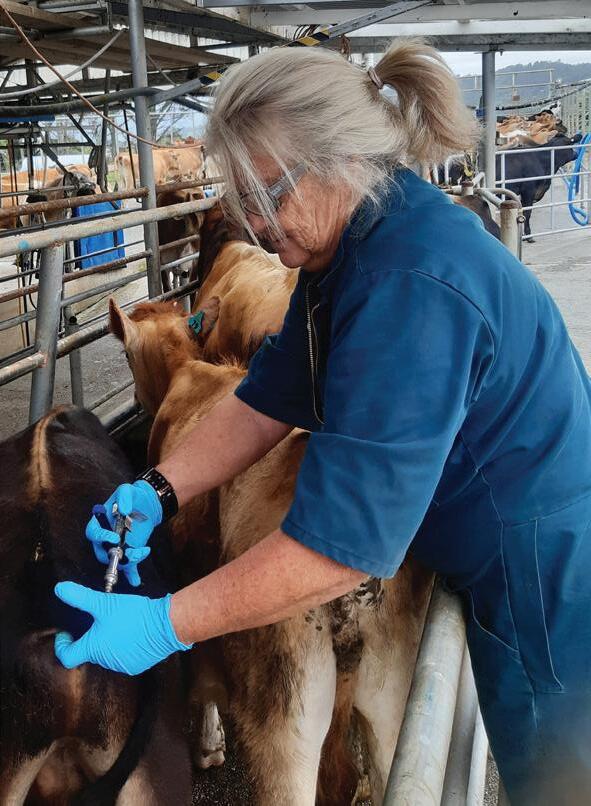



Freddie and Nikita Gane farm Kaituna Ridges near Havelock where they have found a new way to market their wool, by introducing tourists to the New Zealand farming scene.
During the tourist season up to five busloads of largely American tourists a week are entertained and educated by Freddie and his sheep dogs. At the same time, Nikita markets a large range of New Zealand-manufactured woollen products to visitors from their woolshed shop.
While lamb and wool prices are at a low ebb the income from farming tourism is a useful form of diversification for the Gane family. Freddie explains that the venture began when they were approached by the locally owned Marlborough Tour Company,
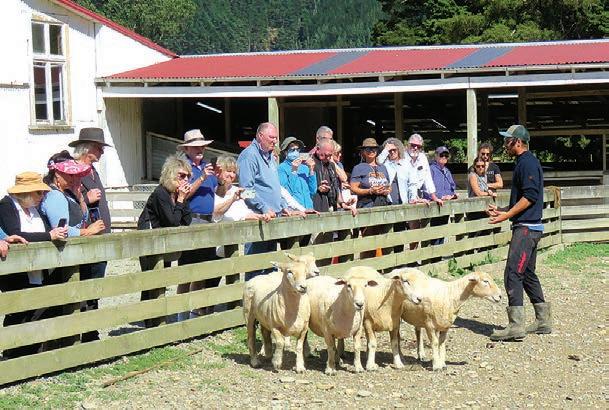
looking to provide a farm tour to complement their Sounds tour and wine-tasting tours. The New York-based owner of Tauck Tourism arrived to evaluate the future experience during

• GRASS HARVESTING • BALEAGE
• HAY • PIT SILAGE
• GROUND WORK • SPRAYING
• AIR SEEDER DIRECT DRILLING
• MAIZE PLANTING & HARVESTING
• EARTHWORKS • CARTAGE
•
Paul 027 422 5893
Phil 027 372 9864

one of the coldest days on record at Kaituna Ridges. Southerly gales and driving horizontal rain peppered the visitors and Freddie as he demonstrated his dog-handling abilities, and he thought,
“That could not have gone worse.”
However, a phone call followed commenting that it was the best tour they had seen.
“So, we thought we had better make it happen,” says Freddie. During the demonstration, Freddie shows the difference between the silent heading dog and the barking huntaway using whistles and commands. Even risking a show of how to train a young pup in the presence of 50 onlookers.
The visitors are provided with tea and scones during which he shears a sheep, explaining how the term ‘pulling the wool over your eyes’ actually works by sending the shorn sheep into a deep sleep.
The race to the bottom of the wool trade is covered, from the highs of the 1950s when much of it went to supply garments during the Korean War to the reliance
on synthetic fibres and the move from local manufacturers to China. It has now become a commodity where the country selling to the lowest-priced market gains the supply contract.
Kaituna Ridges runs Romneys, a strong wooled sheep, and produces approximately forty tonnes of wool. Of that 8 to 9 tonnes go to local manufacturers to add value. Much of the Romney wool goes to carpet manufacturers where the natural crimp in the wool provides a shock-absorbing effect, allowing the carpet to bounce back into shape. The white colour of the wool makes it easier to dye.
The Americans who hailed from all over the States departed with a new understanding of New Zealand farming if not of the New Zealander’s quirky sense of humour.
TONY ORMAN
Marlborough farmers are keeping a watchful eye on Autumn, with much needed rain relative to growth, to carry stock through the winter.
Meat and wool chair Cath Baker told the Marlborough Federated Farmers March meeting that farmers were looking at the fast-approaching reduction in soil temperatures and any resultant reduction in pasture growth.
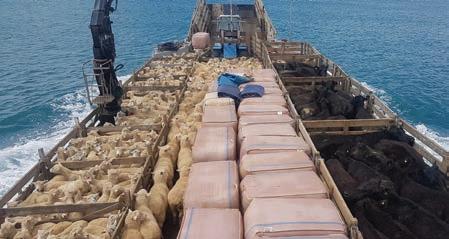
We
“Pushing feed from autumn into winter will be determined by adequate autumn rains before temperatures drop,” she said.
Rain that fell early March was much more than was predicted and was very welcome.
“It was by no means a drought breaker and farmers are looking forward to the next two weeks and beyond for that essential follow up,” says Cath, “It has given some confidence to farmers to put their winter crops in the ground.”
The El Nino weather pattern extended into February as predicted. This has impacted hugely on sheep and beef farmers around the district, particularly in southern and eastern parts of Marlborough. Sheep and beef farmers have already off-loaded much of their trading stock. and are now contemplating cutting numbers of their capital stock where needed. This is a much more difficult decision for farmers, as many have built up superior genetics in their business over the years, said Cath. “Farmers without reticulated water systems have had reliable stock water dams dry up, which have been maintained in past drought years. This has meant that some farmers are trucking water for their stock, a huge logistical, staff-consuming and financial commitment. For others it has meant that
blocks that did have conserved pasture and tag cannot be grazed adequately because gates need to be left open for stock to access water in other parts.”
It is hopeful that the local demand for any store stock that has been retained will be required for vineyard grazing as blocks are harvested around the region. An early calf sale held at the saleyards in late February was reported to have gone very well. Numerous comments have been made that the calves were in incredible condition and is testament to the quality of the farm management out there in testing conditions.
The rain that fell on March 4 was much more than was predicted and was very welcome. It was by no means a drought breaker and farmers are looking forward to the next two weeks and beyond for that essential follow up. It has given some confidence to farmers to put their winter crops in the ground. It is so important for these crops to establish successfully as pasture recovery will potentially be slow, due to the dry and cold conditions.
“Pressure from all angles is hitting us at the moment. Keep an eye on your mates, your neighbours, and keep talking to whoever is your go-to confidant to off-load or vent these stresses. Fed farmers meetings are a perfect catch up, tell your mates!” she said.


Whitebait species found in the Tasman area are threatened and at risk of extinction.
So they can continue to be part of our Kiwi culture, adult whitebait known as Īnanga (Galaxias maculatus) need your help.
The Īnanga species of whitebait make up about 95 per cent of the whitebait we eat. They are part of a wider family of freshwater fish – the ‘galaxids’ – which live exclusively in the southern hemisphere. Aside from bringing great culinary pleasure to many of us, Īnanga are a source of food for many animals, and birds and are known prey for large eels, flounder, and many other fish who feed on them.
“The biggest threat to Īnanga existence is their lack of habitat for spawning,” says Tasman Bay
Guardian’s, Monique Patterson.
“As they spawn in the lower reaches of our water catchments and these areas are affected by activity upstream - they can also be busy urban areas - each can create challenges for spawning.”
Through spring and summer, little whitebait in our coastal rivers, streams, and lakes grow into adult Īnanga, then in late summer or early autumn, they head down steam to lay their eggs – spawn.
“Īnanga are poor climbers and are unable to negotiate barriers to migration such as misplaced culverts and weirs, dams or floodgates,” says Monique. They spawn amongst riparian vegetation in estuarine areas, usually near the upper limit of the saltwater wedge associated with high tides. It has been predicted that the
same spawning sites are used year after year, therefore critical spawning areas can be protected and improved.
“It’s really important that people can understand and identify spawning areas and how spawning affects the life cycle of whitebait,” Monique says. The most important spawning months in Tasman are February – May but spawning also can occur in January.
Tasman Bay Guardians have been delivering programmes in local schools and communities to create understanding about how we can look after the Īnanga.
“It’s fun for kids of all ages and by working together we can make a big difference,” says Monique. Those interested in finding out more or connecting can head to: tasman bayguardians.org.nz

“You are never in a position to not be able to learn more or extend your networking,” Dairy farmer Jess Paewai says.
Jess, and partner Gary Omlo, are contract milkers; who milk around 730 cows, with the assistance of a few employees.
Recently Jess chose to complete two Primary ITO courses - Biosecurity, and Animal Health including calving.
“I had seen the benefits firsthand of others going through Primary ITO,” Jess explains “I met other likeminded people from the area and something I took away was how different farms had different protocols, some had good ideas that I have implemented on the farm here.”
Jess says that the courses built on her existing knowledge.
“The courses have also given me confidence to know that I am doing the right things, especially regarding biosecurity,” Jess adds.
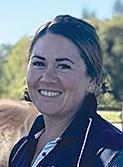
Wakefield-based Kirstie Dodds is Primary ITO’s local training adviser for the meat, fibre, and dairy sectors, she assists those who attend the courses.
“Before working for Primary ITO I had completed a course through them to become an AI Tech (artificial insemination technician) so I know from my experience how helpful Primary ITO can be,” Kirstie says.
Kirstie says that sometimes employers are cautious about investing in training
staff on the off chance they resign, she is quick to point out that it is better to train your staff even with the risk of them departing rather than not train your staff and have them stay.
“Having trained staff on the farm has a great financial impact,” Kirstie adds.
The learnings are a mix of practical and theory and are delivered in a way that employees can still work while learning.
“I found the courses cool, it was great to meet other people from the area and learn about simple steps that we can take on the farm to prevent biosecurity risks like M. Bovis and TB,” Jess explains “I think everyone at all stages in the dairy industry should consider expanding and upskilling.”
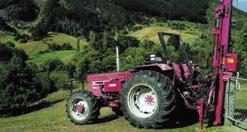
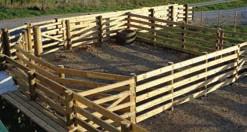


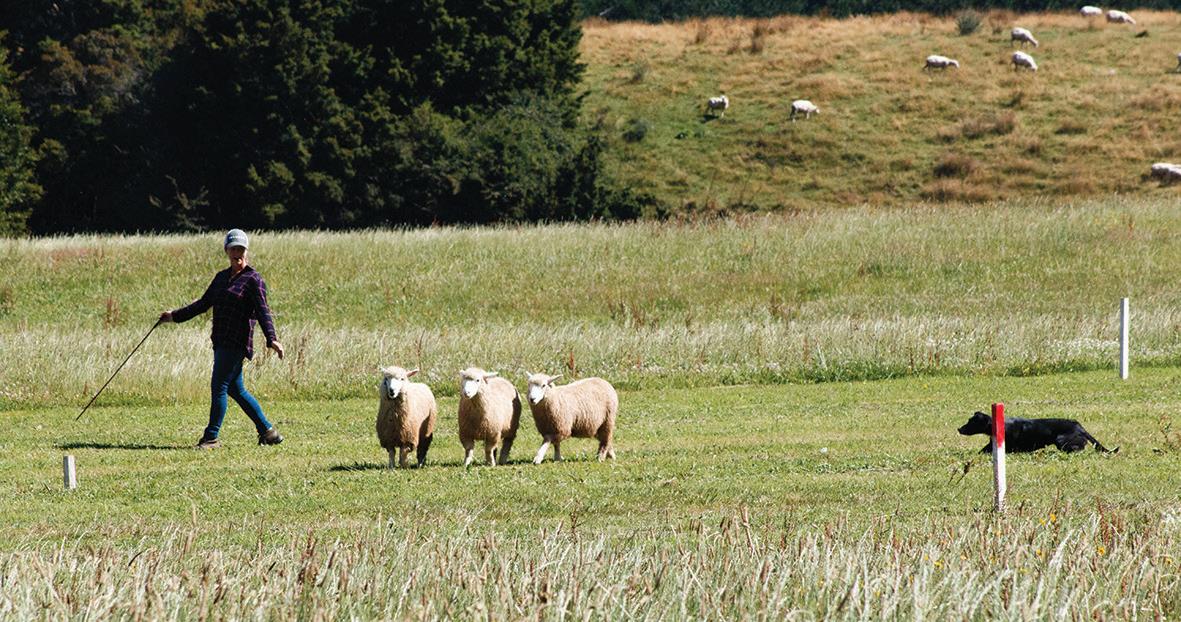
The Fertiliser Quality Council believes its new Director, Tyler Langford, will be a strong advocate for farmers.
“FQC is in good hands with Tyler’s experience in making legislation workable for farmers,” Anders Crofoot says. “She has a strong background in farming and refining legislation and has hit the ground running.”
Farmers are front of mind for the FQC as the key stakeholder to their programmes.
“Tyler is able to negotiate the finer detail of legislation up the pipeline, which is just the strength FQC needs.”
Having spent the past five years honing her skills within the Fed-
erated Farmers Dairy Council.
“For every piece of compliance farmers are made to fill out, that is another committee meeting or school event they can’t support. I am really looking forward to maximising the opportunities within FQC’s Fertmark and Spreadmark quality assurance programmes.”
Advocating for farmers to ensure that rural communities not only survive but thrive is very personal to Tyler.
“I have the blessing of dairy farming in the Golden Bay community with my husband Wayne and three teenage boys.
I am hugely passionate about the strength and resilience of our rural community. I actively spend time in conservation

groups, catchment groups, rugby clubs and serving as the chair of our local recreation park board.”
All of this has led her to the role as the FQC Executive Director.
“I took this opportunity in October and what a ride it has been so far. I am only now just starting to sink my teeth into some of the work that FQC are doing and the opportunities on the horizon that I am looking forward to seizing.”
A massive piece of work she says is the Spreadmark Code update. “I am really excited by what the team has created in the revision of the Spreadmark Code and can’t wait to share it with the rural community soon.”

Federated Farmers Golden Bay
Six months following the gazetting of the te Waikoropupu Springs (TWS) Water Conservation Order (WCO) and much like the inner workings of the springs themselves, much remains unknown. But despite the wider uncertainties over changes to the environmental regulations, farmers in the affected area have recognised the significance of the issues facing them and are taking responsibility to do their part in controlling nutrient loss from their farms.
The unique and pristine waters of the springs are a result of largely unseen hydrogeological, chemical and ecological processes. In the recharge area surface waters seep into groundwater directly or via runoff to the streams and rivers which then lose flow to ground water. Some of this groundwater eventually makes its way to the aquifer that feeds TWS, with estimated lag times from the valley varying from two to five years.
The WCO Commissioners identified dairy farming on the recharge area as the likely majority cause of the increased nitrogen (N) found in the springs. Although other water quality attributes are identified in the WCO, nitrogen is the primary concern due to its increasing concentration.
In its ruling, the first of its kind, the WCO Commissioners are requiring an improvement in water quality, and it has set 2038 as the target date to reduce N at the springs to a five year rolling median of 0.41 mg/l, a roughly 10% reduction. That might not seem much, but the levels involved are miniscule (compare it to the drinking water standard of 11.3 mg/l) and the volume of water in the aquifer is vast at 3 cubic km.
Compound that with uncertain lag times, natural variations, the legacy of historical practices and the vagaries of climate change, you begin to see the enormity of the challenge. The closer one gets to zero (for anything), the more difficult it is to make any improvements.
The commissioners identified managing water quality at TWS as a complex problem requiring a multi-faceted approach. To that end farmers have been playing their part by working with industry and independent experts along with brokering strong working relationships with both Tasman District Council and Manawhenua ki Mohua. The tikanga concept of ki uti ki tai (from the mountains to the sea) and kitiakitanga (guardianship) underpin all efforts.
Farmers are looking to soil science and close tracking of nutrient data to refine management practices and mitigate risks of contaminant loss. They have formed a catchment group, working together to pool resources and information and to provide security as they navigate the pressures and uncertainties that have fallen on a small number of generational family farmers.
The implementation of the WCO falls to Tasman District Council via its Regional Plan and the requisite Action Plan to specifically address the N issues. Just what restrictions or regulations are developed and who they will affect directly and indirectly are as yet uncertain. As it will be important to manage all sources of nitrogen loss in the catchment, the ripples of effect will likely extend well beyond the farm gate. Accounting for the contribution of all urine producing stock (beef, dairy cows, sheep, deer, pigs etc) and domestic septic tanks will all eventually come under scrutiny.











Marlborough


Anzac Day Service - Rai Valley
Rai Valley War Memoria State Highway 6, Rai Valley
Thursday 25 April 2024 11:00am/ All Ages



Saturday 13th April 2024
Marlborough Lines’ Generation Museum on the corner of Thomsons Ford and Old Renwick Roads will be open from 9am-3pm to the public to view our new museum area and a vintage Paxman engine in operation.
The 68 tonne Paxman diesel engine, capable of producing 430kW, was installed in 1930 to generate back-up power and is the only engine of its kind in the world that is still operable.
This ceremony commemorates all New Zealanders killed in the war and also honours returned servicemen and women.
The date itself marks the anniversary of the landing of New Zealand and Australian soldiers – the Anzacs – on the Gallipoli Peninsula in 1915. The aim was to capture the Dardanelles, the gateway to the Bosphorus and the Black Sea. At the end of the campaign, Gallipoli was still held by its Turkish defenders.
Thousands lost their lives in the Gallipoli campaign: 87,000 Turks, 44,000 men from France and the British Empire, including 8500 Australians. Among the dead were 2779 New Zealanders, about a fifth of those who served on Gallipoli.
It may have led to a military defeat, but for many New Zealanders then and since, the Gallipoli landings meant the beginning of something else – a feeling that New Zealand had a role as a distinct nation, even as it fought on the other side of the world in the name of the British Empire.


